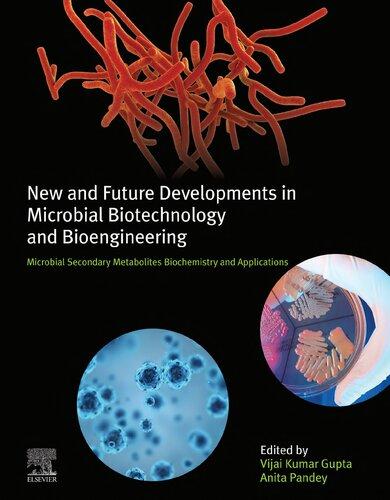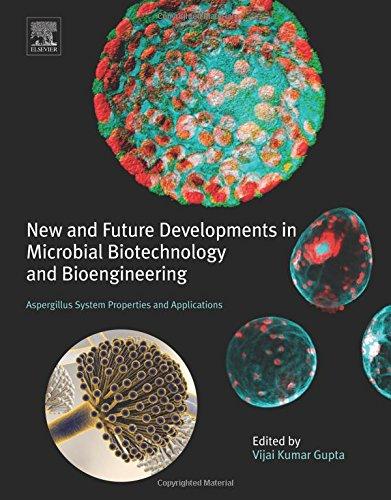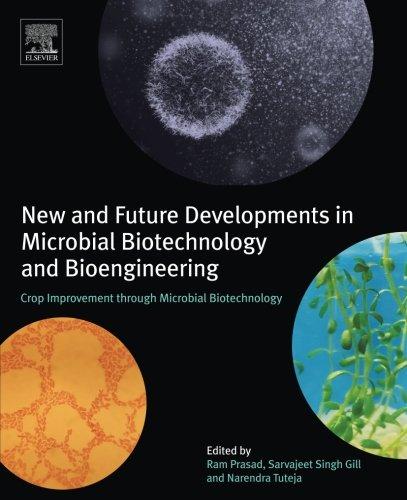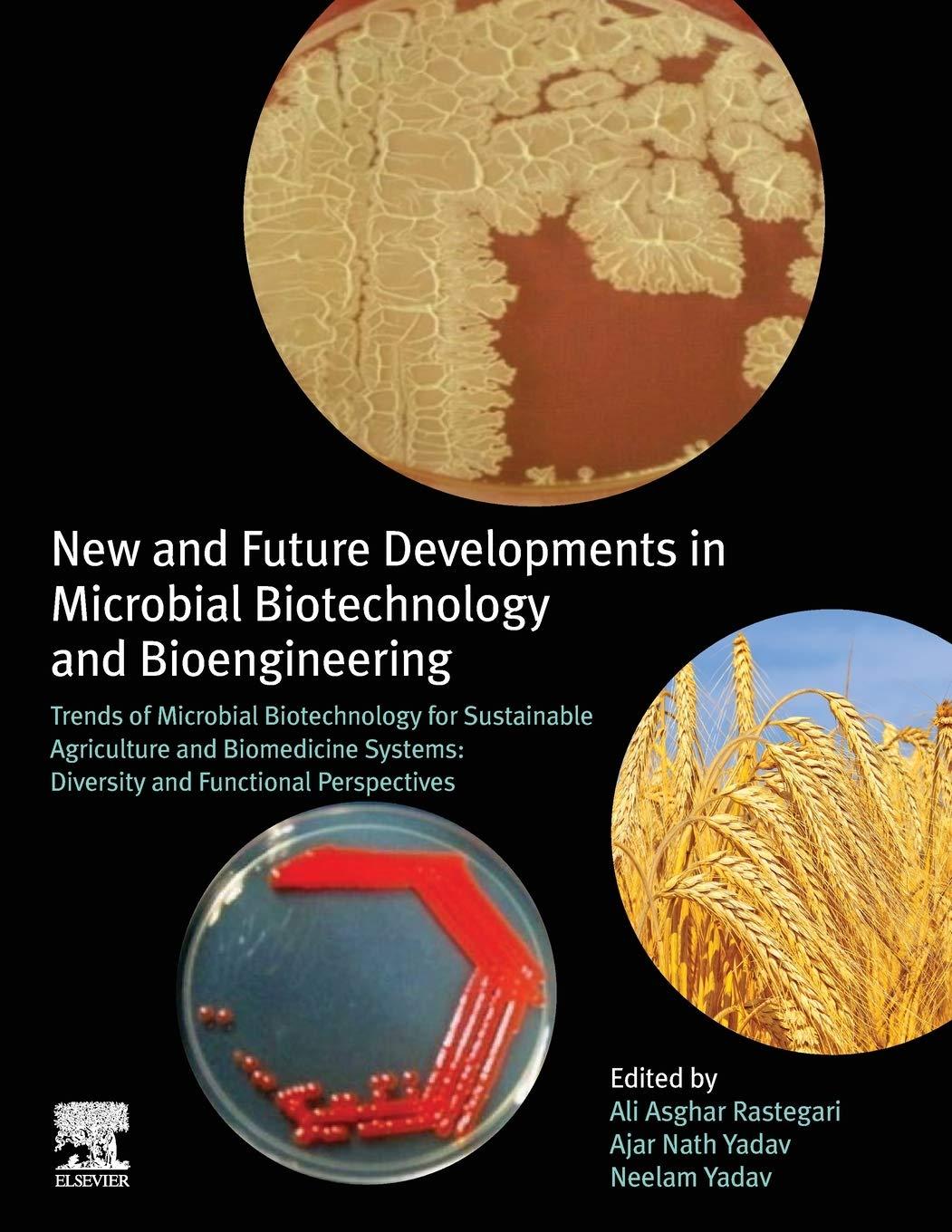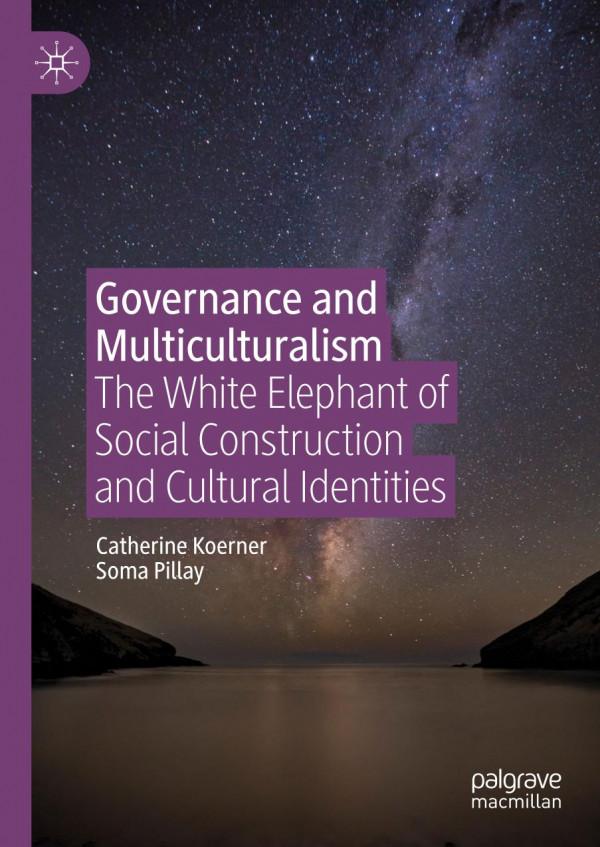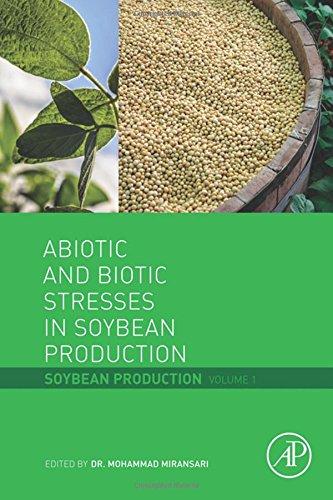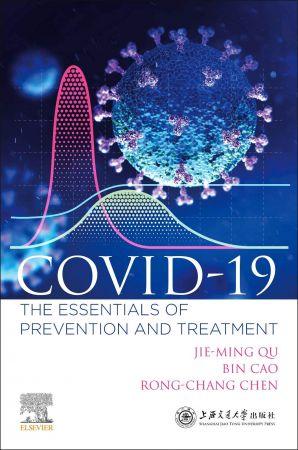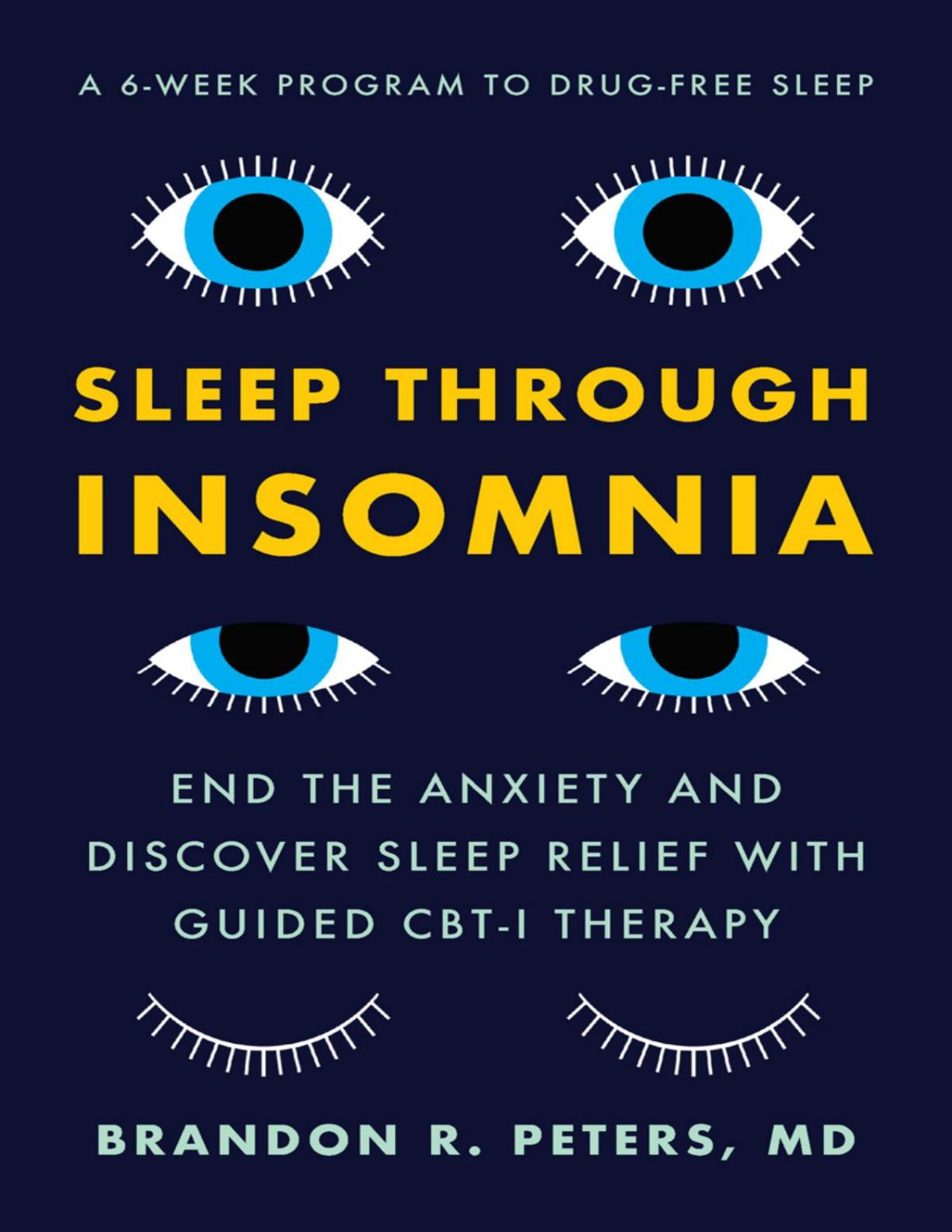ListofContributors
Mohd.Aamir LaboratoryofMycopathologyandMicrobialTechnology,CentreofAdvancedStudyinBotany,Instituteof Science,BanarasHinduUniversity,Varanasi,India
MohdMusheerAltaf DepartmentofLifeScience,InstituteofInformationManagement&Technology,Aligarh,India
ElianaA.Alves DepartmentofChemicalEngineering,FederalUniversityofSantaMaria,SantaMaria,Brazil
AakritiBhandari GeneticsandTreePropagationDivision,ForestResearchInstitute,Dehradun,India
AasifMajeedBhat MicrobialBiotechDivision,CSIR-IndianInstituteofIntegrativeMedicine,Srinagar,India
MadhusmitaBorthakur MicrobiologyLaboratory,DepartmentofBiotechnology&Bioinformatics,North-EasternHill University,Shillong,Meghalaya,India
AliZineddineBoumehira FacultyofScience,UniversityofAlgiers,Algiers,Algeria;UniversityofSciencesandTechnology HouariBoumediene,FSB,LBCM,Algiers,Algeria
ThiarlesBrun DepartmentofChemicalEngineering,FederalUniversityofSantaMaria,SantaMaria,Brazil
VinaySinghChauhan DepartmentofBiotechnology,BundelkhandUniversity,Jhansi,India
EduardoJ.Chica FacultyofAgriculturalSciences,UniversityofCuenca,Cuenca,Ecuador
BalasubramanianCibichakravarthy MolecularMicrobiologyLab,DepartmentofBiotechnology,BharathiarUniversity, Coimbatore,India
Ta ´ ssiaC.Confortin DepartmentofChemicalEngineering,FederalUniversityofSantaMaria,SantaMaria,Brazil
KashyapKumarDubey BioprocessEngineeringLaboratory,DepartmentofBiotechnology,CentralUniversityofHaryana, Mahendergarh,Haryana,India
ManishKumarDubey LaboratoryofMycopathologyandMicrobialTechnology,CentreofAdvancedStudyinBotany, InstituteofScience,BanarasHinduUniversity,Varanasi,India
GauravRajDwivedi Department&SchoolofEnvironmentalSciences,BabasahebBhimRaoAmbedkarUniversity, Lucknow,India;MicrobiologyDepartment,ICMR-RegionalMedicalResearchCentreBhubaneswar,Bhubaneswar,India
HeshamA.El-Enshasy InstituteofBioproductDevelopment,UniversitiTeknologiMalaysia(UTM),Skudai,Malaysia;City ofScientificResearchandTechnologyApplications,NewBurgAlArab,Alexandria,Egypt
VijaiKumarGupta ERAChairofGreenChemistry,DepartmentofChemistryandBiotechnology,SchoolofScience,Tallinn UniversityofTechnology,Tallinn,Estonia
HocineHace ` ne FacultyofScience,UniversityofAlgiers,Algiers,Algeria;UniversityofSciencesandTechnologyHouari Boumediene,FSB,LBCM,Algiers,Algeria
GopinathHalder DepartmentofChemicalEngineering,NationalInstituteofTechnology,Durgapur,India
QaziParvaizHassan MicrobialBiotechDivision,CSIR-IndianInstituteofIntegrativeMedicine,Srinagar,India
AbdEl-LatifHesham DepartmentofGenetics,FacultyofAgriculture,AssiutUniversity,Assiut,Egypt
ThingujamIndrama DepartmentofBiotechnology,InstituteofBioresourcesandSustainableDevelopment,Imphal,India
S.R.Joshi MicrobiologyLaboratory,DepartmentofBiotechnology&Bioinformatics,North-EasternHillUniversity,Shillong, Meghalaya,India
DesRajKashyap DepartmentofMicrobiologyandImmunology,IndianaUniversitySchoolofMedicine-NW,Gary,IN, UnitedStates
RobinkaKhajuria DepartmentofBiotechnology,HarlalInstituteofManagementandTechnology,GreaterNoida,Uttar Pradesh,India
MohdSajjadAhmadKhan DepartmentofBasicSciences,BiologyUnit,HealthTrack,ImamAbdulrahmanBinFaisal University,Dammam,KingdomofSaudiArabia
DivjotKour DepartmentofBiotechnology,AkalCollegeofAgriculture,EternalUniversity,BaruSahib,Sirmour,India
RaquelC.Kuhn DepartmentofChemicalEngineering,FederalUniversityofSantaMaria,SantaMaria,Brazil
AnilKumar DepartmentofBiotechnology,TIFAC-COREBuilding,ThaparInstituteofEngineeringandTechnology,Patiala, India
ArvindKumar DepartmentofBiochemistry,FacultyofScience,VeerBahadurSinghPurvanchalUniversity,Jaunpur,India
DhirendraKumar MicrobialProcessDevelopmentLaboratory,UniversityInstituteofEngineeringandTechnology, MaharshiDayanandUniversity,Rohtak,Haryana,India;DepartmentofBotany,ChaudharyBansiLalUniversity,Bhiwani, Haryana,India
PunitKumar MicrobialProcessDevelopmentLaboratory,UniversityInstituteofEngineeringandTechnology,Maharshi DayanandUniversity,Rohtak,Haryana,India
LucianaLuft DepartmentofChemicalEngineering,FederalUniversityofSantaMaria,SantaMaria,Brazil
MarcioA.Mazutti DepartmentofChemicalEngineering,FederalUniversityofSantaMaria,SantaMaria,Brazil
MukeshMeena LaboratoryofMycopathologyandMicrobialTechnology,CentreofAdvancedStudyinBotany,Instituteof Science,BanarasHinduUniversity,Varanasi,India;DepartmentofBotany,UniversityCollegeofScience,Mohanlal SukhadiaUniversity,Udaipur,Rajasthan,India
P.K.Mishra DepartmentofChemicalEngineeringandTechnology,IndianInstituteofTechnology(BHU)Varanasi, Varanasi,India
MadhumantiMondal DepartmentofChemicalEngineering,NationalInstituteofTechnology,Durgapur,India
RamNaraian DepartmentofBiotechnology,MushroomTraining&ResearchCentre(MTRC),FacultyofScience,Veer BahadurSinghPurvanchalUniversity,Jaunpur,India
GunapatiOinam DepartmentofBiotechnology,InstituteofBioresourcesandSustainableDevelopment,Imphal,India
SolaiRamatchandiranePrabagaran MolecularMicrobiologyLab,DepartmentofBiotechnology,BharathiarUniversity, Coimbatore,India
P.WRamteke DepartmentofBiologicalSciences,SamHigginbottomUniversityofAgricultureTechnology&Sciences (FormerlyAllahabadAgriculturalInstitute),Allahabad,India
KusamLataRana DepartmentofBiotechnology,AkalCollegeofAgriculture,EternalUniversity,BaruSahib,Sirmour,India
AliAsgharRastegari DepartmentofMolecularandCellBiochemistry,FalavarjanBranch,IslamicAzadUniversity,Isfahan, Iran
ManojRaturi GeneticsandTreePropagationDivision,ForestResearchInstitute,Dehradun,India
BalwantRawat DepartmentofAgricultureandForestry,GraphicEraHillUniversity,Dehradun,India
JanhviMishraRawat BotanyDivision,ForestResearchInstitute,Dehradun,India
M.SudhakaraReddy DepartmentofBiotechnology,TIFAC-COREBuilding,ThaparInstituteofEngineeringand Technology,Patiala,India
AabidManzoorShah MicrobialBiotechDivision,CSIR-IndianInstituteofIntegrativeMedicine,Srinagar,India
ShachiShah EnvironmentalStudies,SchoolofInterdisciplinaryandTransdisciplinaryStudies,IndiraGandhiNational OpenUniversity,NewDelhi,India
Shikha Department&SchoolofEnvironmentalSciences,BabasahebBhimRaoAmbedkarUniversity,Lucknow,India
SabaSiddiqui IntegralUniversity,Lucknow,India
BhanumatiSingh DepartmentofBiotechnology,BundelkhandUniversity,Jhansi,India
ShaliniSingh SchoolofBioengineeringandBiosciences,LovelyProfessionalUniversity,Phagwara,India
BrijeshSinghSisodia DepartmentofBiochemistry,RegionalAyurvedaInstituteofFundamentalResearch,(UnderCCRAS, MinistryofAYUSH,Govt.ofIndia),Pune,India;Biochemistrylaboratory,RegionalAyurvedaResearchInstituteforDrug Development,Gwalior,MadhyaPradesh,India
StefaniS.Spannemberg DepartmentofChemicalEngineering,FederalUniversityofSantaMaria,SantaMaria,Brazil
ManishSrivastava DepartmentofPhysics&Astrophysics,UniversityofDelhi,NewDelhi,India
NehaSrivastava DepartmentofChemicalEngineeringandTechnology,IndianInstituteofTechnology(BHU)Varanasi, Varanasi,India
NazaninTataeiSarshari DepartmentofMolecularandCellBiochemistry,FalavarjanBranch,IslamicAzadUniversity, Isfahan,Iran
OnkarNathTiwari CentreforConservationandUtilizationofBlueGreenAlgae,DivisionofMicrobiology,Indian AgriculturalResearchInstitute,NewDelhi,India
IzelmarTodero DepartmentofChemicalEngineering,FederalUniversityofSantaMaria,SantaMaria,Brazil
RamSanmukhUpadhyay LaboratoryofMycopathologyandMicrobialTechnology,CentreofAdvancedStudyinBotany, InstituteofScience,BanarasHinduUniversity,Varanasi,India
M.Vasundhara DepartmentofBiotechnology,TIFAC-COREBuilding,ThaparInstituteofEngineeringandTechnology, Patiala,India
SiddarthanVenkatachalam MarineNaturalProductsResearchLab,DepartmentofBiochemistryandMicrobiology,Rhodes University,Grahamstown,SouthAfrica;ArcticDivision,NationalCentreforPolarandOceanResearch,Vasco-Da-Gama, Goa,India
V.Venkatramanan EnvironmentalStudies,SchoolofInterdisciplinaryandTransdisciplinaryStudies,IndiraGandhi NationalOpenUniversity,NewDelhi,India
AjarNathYadav DepartmentofBiotechnology,AkalCollegeofAgriculture,EternalUniversity,BaruSahib,Sirmour,India
NeelamYadav GopiNathP.G.College,VBSPUniversity,Deoli-Salamatpur,Ghazipur,UttarPradesh,India
LuisAndre ´ sYarza ´ bal UnitofHealthandWellbeing,CatholicUniversityofCuenca,Cuenca,Ecuador;SchoolofBiology, FacultyofSciences,UniversityofLosAndes,Me ´ rida,Venezuela
AndleebZehra LaboratoryofMycopathologyandMicrobialTechnology,CentreofAdvancedStudyinBotany,Instituteof Science,BanarasHinduUniversity,Varanasi,India
MadhusmitaBorthakurandS.R.Joshi
MicrobiologyLaboratory,DepartmentofBiotechnology&Bioinformatics,North-EasternHillUniversity,
1.1INTRODUCTION
ThereisgeologicalevidenceoftheexistenceofmushroomsfromthefossilrecordofthelowerCretaceous periodabout130millionyearsago [1].Anthropologicalobservationsprovideevidenceoftheuseofmushrooms asasourceoffoodormedicinesbyhuntersorbyfoodgatherers.Mushroomswerenamed“theplantofimmortality”bytheancientEgyptians,some4600yearsago,asitwasadeliciouscuisinefavoredbytheroyals.Thefirst everreportofitsconsumptionasaroyaldishwaswrittenbyaGreekphilosopher,Theophrastus,duringthe period372 287BC.Mushroomsarewidelyacceptedasapalatablefoodsinceancienttimeinvariouscountries includingGreece,Russia,China,MexicoandLatinAmerica.MushroomsarrivedinIndiathroughthenorthwest viaAfghanistantoenterintothefamouscivilization,theIndusValley [2].AryansthroughouttheInduscivilizationputforwardmushroomsastheplantsin“RigVeda”withhallucinogenicpropertiesandtheywereusedin variousreligiousrituals.Inancientera,poisonousmushroomswereknowntobeas“soma”,wherethetribeof theIndusvalleywasseeninharvestingandsellingapoisonous Amanitamuscaria forvariousritutals [3].The extractfrompoisonousmushroomsalsoknowntobeas“Somarasa”wasusedforvarioustraditionalritualsto inducetheimmunesysteminanimmuno-compromisedindividualandalsohelpedingettingthelost.Thiswas somewhatresponsiblefortheearlyruinofthecivilization.Mushroomswasusedashallucinogenandalsofor blackmagicintheancienttimeduetoitssuddenappearanceafterrainwithoutproperbudorfruitingbody.
Thewordmushroomwasnamedafterthecultivationofthecommonbuttonmushroom, Agaricusbisporus, withastem(stalk),anumbrellashapecap(pileus),andgills(lamellae)underneaththecap.Theterm“macrofungi”wasfirstcoinedforBasidiomycotaandAgaricomycotawithadefinedfruitingbodythatcanbeeither
epigeousorhypogeousandiseasilyvisibletothenakedeye [4].Beingdiverse,theChineserefertomushrooms asthe“KingofthePlanet,”whiletheJapaneserefertothesameas“TheDiamondoftheForest.”Fungihas gaineditsimportanceinhistorybythedocumentationofdesserttruffle(Terfeziaarnenari)intheBibleasthe “BreadofHeaven”andalsoasthe“MannaoftheIsraelites” [5] Formitopsisofficinalis, abrownrottenfungus,is knownasthe“BreadofGhosts”bytheindigenouspeopleofthePacificNorthwestanduseittomarkthegrave ofShamenandareknowntotreatillnessescausedbysupernaturalpowers.Theybelieveinmushroomsporophoreforitsspiritcatchingabilities.Apartfromitsspiritualbeliefs,fewmushroomslike Exobasidiumvaccinii (EarsofGhost)areknowntoinfectstem,leaves,andflowersofEricaceousplantandsubsequentlyformbasidia coveredgillswhichareconsumedbytheindigenouscoastalgroupsofPacificNorthwestwhoconsideredthem tobeberries [6].Burk [7] reportedthespiritualandreligioususeofpuffballmushroomsbythepeopleofNorth Americawhobelievedthattheyhavetheabilitytowardoffghosts.InAsiathemycophilicsocietiesareassociatedwiththeindigenouspeopleofNortheastIndia,WesternGhats,andNorthwestIndiaandChina.Thelocal inhabitantscollectmushroomsfromtheirneighboringlocalities,meadows,andforestsforconsumptionandsell themtoearnrevenuefortheirfamilyduringthemonsoonseasonwhenotherforestnonwoodproductsare unavailableinthemarket.Amongthevariousspeciesofmushroomswhicharecommonlyconsumedbythepeopleare Termitophilous spp.,whichinclude T.microcarpus, T.aurantiacus, T.eurhizus, T.clypeatus,and T.Tyleranus [8].AfewindigenoustribesofNortheastIndia,suchasKhasisofMeghalaya,useatraditionaltechniquecalled “narsuh”forcookingmushrooms,wheretheyheatthetipofasmallironrodandplaceitinthemiddleofthe bowlcontainingacookedmushroom.Theybelievethattheheatreleasedfromthetipisresponsiblefordestroyingorabsorbingthepoisonousharmfulsubstancesfromthemushrooms [9].Thefruitingbodiesarewashedand boiledwithafewclovesofgarlic.Iftheclovesofgarlicturnblackincolor,theybelievethatthemushroomsare poisonousinnature,otherwisetheyaresafetoconsume.
Withregardstotheirtoxicity,thereisahistoryofrelevantpracticalobservationsrelatingtothepoisonousscenariosofmushrooms.TheperilousnatureofmushroomsisobservedinvariouspartsofIndia,mostprevalently intheNorth-Easternzonewherethemajorityofthepopulationdependsonforestproductsduringthemonsoon andpostmonsoonseasons.Therehavebeentragediesofmushroompoisoningfrequentlyreportedandafew instancesin2016werereported,suchasonApril6,8,and13wherethedeathtollrosetomorethan10afterthe consumptionofwildmushroomsinMawsawavillageofMawsynramandNongpriangofSohra,Meghalaya, India [10].OnApril22,2016,adeathtollofsixfrommushroompoisoninginRongdongvillageofSijuinGaro HilldistrictofMeghalaya,Indiawasreported [11].Thetoxiccomponentsareknowntobepresentinthefruiting capsofmushrooms [12]
Keepinginmindtheirpoisonousnature,mushroomspeciesareknownalsotoaccumulatenonpoisonous diversesecondarymetabolites,includingpolyphenols,alkaloids,terpenes,flavonoid,phenols,andsteroids.Ithas beenestimatedthattherearemorethan140,000mushroomswithsofaronly10%beingknown [4,13].Beingrich inproteincontent,theycanbeusedasasourceofproteinsupplementtoreducethegapofmalnutritionindevelopingcountriesandarecultivatedworldwide.Europeansareknowntohavecultivatedmushroomsincavesduringthe16thand17thcenturiesandtheChinesewereknowntoartificiallycultivatethemushroomsafew thousandyearsago.ThecultivationofmushroomsinIndiawasfirststartedin1940bySuandSeth [14] Mushroomsareknowntoconverttheagriculturalandforestcompostintoausefulcompostingbedandreduce thelevelofxenobioticsintheenvironment.
1.2MUSHROOMANDITSTAXONOMY
Thepreliminaryidentificationofmushroomstodistinguishdifferentstrainsisbasedonbothmorphological featuresduringfieldobservationandbythemicroscopicfeaturesoftheirspores,pileus,stipe,volva(ifpresent), andhost.Butthestudyofmorphologicalandmicroscopicfeatureshasleftmanyunsolveddilemmasbecauseof thepaucityofmorphologicalfeaturestogetherwiththeabsenceofphylogenicanalysis [15].Epigeneticfactors havemadethemorphologicalfeaturesunstablebothintra-andinterspeciesmakingithighlyincongruentwith themoleculardata,thusmakingthelattertheconfirmatoryidentification [16].Theupgradingofvariousstatisticalmethodsalongwithbioinformaticstoolshasmadetheevaluationoftheevolutionarycladeofaspecieseasier. Themolecularapproachhasbeenattemptedbyamplificationofspecifichypervariablegenelocibypolymerase chainreaction(PCR)orbyrestrictiondigestionofaspecificgenesequenceusingrestrictionfragmentlengthpolymorphism.ThestructuralgenesequencerRNAisknownforitswell-conservedregionsateithergenusorspecies 2
level.SophylogeneticanalysisformushroomisbasedonthepolymeraseamplificationofaconservedITSregion whichconsistsofITS1-5.8S-ITS2locatedbetweentherRNAgeneoftherDNAcistron [17 20].Alongwiththe nucleargene,certainproteingenes(tef1, rpb1, rpb2)havealsobeenconsideredaspowerfultoolsinthestudyof theevolutionarytraitsofthefungi [21,22].ThesequenceofafewconservedribosomalDNA(nSSUandnLSUr DNA)andmtDNA(COI)segmentsarealsobeingusedintheanalysisoffungalsystematicstudies.
Anarbitrarymarker-basedDNAprobetechniqueisalsoadvantageoustoidentifymushrooms,wherebythe polymerizedampliconsarerevealedbyelectrophoresisandarecharacterizedbydirectsequencing.Butabarcode toidentifythepoisonousstrainsfromtheirediblecounterpartsisyettobeanalyzedanddevelopedforrapid identificationofthevarieties.
Fewmushroomsmightbemorphologicalalikebutonemightpossessthetoxiccompoundwhileotherdoesnot. Theethniccommunitiesareoftenseenwithafallacytocharacterisethemushroomsbasedontheirpalynological, sporologicalandmorphologicaltraitwhichareinadequate.Butageneticmushroombarcodeisyettobeidentifiedwhichcanbeusedasamoleculartooltoidentifythenatureofthetoxicityofamushroom.Afewmushroomsinthegenus Psilocybe,thatis, P.semilanceata and P.cubensis,areknowntoproducehallucinogeniceffects whilethemorphologicallysimilar P.merdaria and P.montana inthesamegenusdonotproducesuchmetabolites [23].Afewofthehighlyfatalmushroomsfromthegenus Lepiota aremorphologicallysimilartotheediblemushroom Macrolepiota. Themushroomtoxinsarediverseandarecategorizedasamanitoxins,phallotoxins,monomethylhydrazine,orellanine,muscarine,ibotenicacid,muscimol,coprine,psilocybin,andpsilocin [24].The natureofthetoxicityofasinglespeciesalsodependsonthehabitatandvariousepigeneticfactors,thepreparationandconsumptiontechniques,orgeneticresistivityamongtheethnictribe.Forexample, Gomphusfloccosus,a poisonousmushroom,iswellknownforcausingaseveregastrointestinaldisorderintheUnitedStatesbutis knownasbeingedibleamongtheethnicgroupsofMeghalaya,Indiawithoutanysucheffects.
RapidmoleculartoolsalongwiththePCRamplificationofITS1locuswoulddifferentiatethehallucinogenic mushrooms Panaeolus and Psilocybe basedontheirpolymorphiclengthoftheregion [19,20].Acontradictory observationtotheabovestudywasreportedbyNugentandSaville [25],whereafewhallucinogenicmushrooms ofNorthAmericanspecieswereexaminedbasedonPCRamplificationofboththeITSregionofrDNA(ITS1) andalargeribosomalsubunitofthenucleolarRNA(nLSUrRNA).Theyconcludedthatthehighlypolymorphic ITSspandoesnotmatchwiththemorphologicalfeaturebutnLSUrRNAformsclustersanddifferentiatesthehallucinogenicfromnonhallucinogenicisolatesofdistantclades.
Ahighlytoxic Amanita mushroomencodes α-amanitin,anamatoxin(AMA1),andphallacidin,aphallotoxin (PHA1),whichareknowntobesynthesizedonribosomesandcanbestudiedbydesigningregion-specificprimers [26].Inastudytogetastandardbarcodeforpoisonousmushrooms,Qingetal. [27].reportedtheuseof threemarkers—thelargesubunitnuclearribosomalRNA(nLSU),theinternaltranscribedspacer(ITS),andthe translationelongationfactor1alpha(tef1α)—inapoisonous Amanita sp.ofChinaandconcludedthattef1α and nLSUcanbeproposedasbarcodesforthepoisonous Amanita,whileITScanbeusedasaprimarybarcodefor theidentificationofmushroomswithoutdifferentiatingthepoisonouscladefromtheedibleone.
1.3THETOXINSANDTHEIRPERILOUSCONNECTIONS
Toxicityfrommushroomsgenerallyoccursaftertheingestionofapoisonousvarietywhichisoftenmisidentifiedasanediblevarietybyamateurmushroomhunters.Theseverityofthepoisoningdependsonvariousfactors withtheconcentrationofthetoxinbeingthemostsevereone.Geographicaldemography,theamountconsumed, habitat,growthconditions,andthegeneticconstituentsoftheindividual,includingtheage,aremostlytherelevantfactorsformushroomtoxicity.Itisoftenseenthatthemushroomingestionresultsinhigherseverityinan olderpersonthanthatofchildrenorhealthyyoungadults.Apartfromthese,otherfactorsrelatedtomushroom toxicityarethecookingtechniquesandmethodofconsumption.Oftenitisobservedthatconsumptionofmushroomswithalcoholcausesahigherincidenceofpoisoning.Themostcommonexampleistheinkcapmushroom, Coprinopsisatramentaria.Whenconsumedalongwithalcohol,apoisonousmushroomresultsin“disulfiram”syndromeandlaterleadstoamyocardialattack. Coprinopsisatramentaria isknowntosecreteacyclopropylglutamine compound,coprine,andanactivemetabolite,1-aminocyclopropanol,whichblockstheenzymeacetaldehyde dehydrogenaseresponsibleforthebreakdownofacetaldehyde,anintermediateofalcoholinthebody [28,29]
Thetoxinsinmushroomsaregeneralizedbasedonthetargetedorganspecificity,mushroomphysiologywhere geographicalhabitatisalsoconsideredasavariant,theamountoftoxinconsumed,theseason,andthetimefrom
ingestiontotheonsetofsymptoms.Themostlethalamongallthemushroomtoxinsisacyclopeptide,theamanitin. Therearefouramanotoxins,thatis, α-amanitin, β-amanitin, γ-amanitin,and ε-amanitin,themostlethalbeing the α-amanitinfoundinthedeathcapofseveral Amanita sp., Galerina sp.,and Lepiota sp. α-Amanitinis knowntoinhibitRNApolymeraseIIandproteinsynthesis.Mostlypresentinthedeathcapof Amanitus sp.,it getseasilyabsorbedinthegastrointestinaltractandcausesseveregastrointestinaldisordersincludingnausea, vomiting,diarrhea,andhepatocellulardisorders.Apartfromthecommonlethaltoxinamanitin,gyromitrin (amonomethylhydrazine),orellanine,muscarine,coprin,ibotenicacid,andmyotoxinarealsoconsideredlethal basedontheamountconsumed.Gyromitrinisanunstablevolatilehydrazinecompoundwhichbreaksdownto formmonomethylhydrazinewhichisacarcinogen.Afewofthe Gyromitra sp.areedibleandcanleadtosevere fatalsymptomsbytheinhalationofthetoxiccompoundwhilecooking [30].Itisalsoinvolvedincertainhepatocellulardamageincludinghepaticnecrosisandjaundice.ThenextofthemushroomtoxinsisOrellaninefromthe Cortinariaceaefamily.ThefirstepidemiologyfromOrellaninewasobservedinPolandduringthe1950swhere morethan100peoplebecameillduetotheconsumptionof Cortinariusorellanus [31].Orellaninemainlyinterferes withtherenalsystemandcausesfattyliverandvariousothernephriticdisorders.Symptomsdonotappearimmediatelyafterconsumption.Itdependsontheindividualgeneticresistivitywhichcanlastfrom2 3daysto3weeks andincludessymptomslikeflu,nausea,vomiting,andheadacheleadingtorenalfailure [32] Inocybe and Clitocybe sp.areknowntoproduceatoxiccompoundmuscarinewhichisalsofoundintraceamountsin Boletus sp., Lactarius sp.,and Russula sp.MuscarineisknowntomimicacetylcholineandbindstotheneurotransmitteracetylcholinereceptorandinteractswithGproteintoinhibitadenylcyclaseanddecreasecyclicadenosinemonophosphate(cAMP).Symptomsofthistoxininvolveexcessivesweating,diarrhea,miosis,abdominalcramps,and salivationwhichareseenwithinanhourofconsumptionandlastforupto24hours.Themuscarineproducing mushroomsinclude Clitocybedealbata,whichisoftenmisidentifiedwithanedible Marasmiusoreadus. Anagonistto glutamateistheibotenateortheibotenicacidwhichisacommontoxinin Amanita sp.Itmostlyaffectsthenervous systemandeffectsareobservedwithin30 180minutesofconsumption.Charcoaltreatment,alongwiththedrug atropine,isoftenadministeredtothepatientafteribotenateconsumption [33].Ahallucinogeniccompoundpsilocybininthegenus Psilocybe isconvertedtopsilocininthebodyafewhoursafterconsumptionandresultsinthe alterationofthemind,includingsuicidalthoughts,psychosis,andconvulsions [34 37].Apartfromthese,afew toxinslikebolesatineandarabitol(sugaralcohol)arenonlethalandcauselesssevereabdominaldisordersand nausea.Thesearefoundinanediblemushroom,Oyster.Itsadverseeffectsdependontheageofandgeneticvariabilityamongtheconsumers.
Outof283speciesofmushrooms,100areknowntobehighlypoisonousandareoftenaccidentallyconsumed [38].Ninety-fivepercentofmushroompoisoningisduetothemisidentificationoflocalpoisonousoneswhich morphologicallymimicanediblevariety.Duringtheonsetofthemonsoonwhenthemushroomspeciestendto produceafruitingbody,accidentalmushroompoisoningisoftenacommonphenomenon.Mushroomsareoften gatheredbasedontraditionalethnomycologicalknowledgewhichisoftenpropoundingamyth.Thereisaneed toeducatethemassesandforresearchtohaveagreateremphasisonthelocalvarietyofthemushroomto discriminatethetoxiconesfromtheedibleones.
1.4PROSPECTSANDCONCERNSINTERMSOFHUMANHEALTH
Indiaisadiverseagroclimaticlandwithanincreasingpopulationandagronomicwaste,andthusthedemand forachemical-freefunctionalfoodwithpotentialhealthbenefitsisatapeak.Mushroomproductionisglobally acceptabletoconsumers,alongwithenvironmentalsustainability,asitdoesn’tcompeteforfarmlandsinceituses agriculturalwasteasitsbedtogrow.Itinducesdiversificationoftheagronomicfarmasitpromotesrecyclingof theagrowasteincludingperiodicindustrialwaste.Mushroomsupplementationtothedietcanbridgeproteinmalnutritionandcanimprovethesocioeconomicconditionsofthepopulation.Ediblemushroomsusuallyhaveasignificantlyhigherrateofcrudeprotein,digestiblecarbohydrate,dietaryfiberswhichactasprebioticstoenhancethe growthofbeneficiarymicrobesinthecolon,vitamins,andmineralswithatraceamountofsaturatedlipids.
Beingrichinantioxidant,mushroomsaresaidtoboos timmunity,inhibitthegrowthoftumors,lowerthe riskofcancer,detoxifythebody,andreduceinflammation.Thecommonoystermushroomisknownto decreasethelevelofcholesterol.Mushroomssuchasthebuttonmushroom, A.bisporus,mostlypossessergosterolinsteadofcholesterol,whichinthepresenceofsunlightbreaksaparttoformvitaminD2.Mushroomsare consideredtobeanimportantsourceofvitaminCandvitaminB.Mushroomshavebeenusedasfolk
medicinesforthousandsofyears.Theyarerichinactivepolysaccharides(β-glucans),whichupregulatethe immunesystemandactasscavengersoffreeradicals .Thepresenceofpolysaccharidesalsomakesthema potentanticancerousdrug.Phenolicsintheformsofflavonoids,phenolicacid,lignans,tannins,andterpenoids aresomeofthemajorcomponentsofmushroommetabolite sexhibitingantioxidantactivities.Phenoliccompoundsareknownasfreeradicalinhibitors;oxygenscavengerswhichinhibitthelipidoxidationinvivo [39] Thepresenceofafewsecondarymetabolitesinmushrooms, includingterpenes,alkaloids,steroids,andquinolones,makesthematargetsourcefornovelantimicrobialcompounds.Thetraditionalutilizationofmushrooms isseenamongtheethnictribesofSouthAsiancountries, throughtheirantineoplasticsandimmunoregulatory propertiesandtheyareconsidered asminipharmaceuticalfactories [40] .Fleshyfruitingbodymushroomscan beusedasapotentsourceofbiopharma ceuticalproductsduetotheirexcessivepolysaccharidesandtriterpenoids.Forthedevelopingcountries,theycanserveasagoodsubstituteforproteinmalnutrition [41].Astudy byChang [42] reportedthat2000mushroomsareedible,ofwhich20arecommerciallycultivatedandfourto fiveareindustriallycultivated.
1.5MUSHROOMSASDIETARYSUPPLEMENTS
Mushroomshavebeenusedasafooditemsincetimeimmemorial [43].Mushroomsareconsideredasthe world’slargestuntappedresourcesofdietarysupplements(Tables1.1and1.2 ).Theirconsumptionhas increasedduetothepresenceofhighamountsofproteincontentandtraceminerals [51,52].Incomparison withothereatables,includingfruit,vegetables,an dlegumes,mushroomsorbasidiomycetescanprovetobe betterasarichsourceofcertaindietaryfactorsthatcanbebeneficialtohumanhealthandgrowth [53].They areconsideredasahealthyfoodcontainingessentialfattyacidsandbeinglowinthenumberofcaloriesand highintheconcentrationofprotein,fats,andminerals [54].Aswildmushroomsareconsideredtohavegreater proteincontentthancommer ciallyavailablemushrooms,severalreportshaverevealedthattheyareusedin thediettocombatvariousdiseases [1] .ForadevelopingcountrylikeIndia,theycanserveasagoodsubstitute forproteinmalnutrition [41].Mushroomswithfleshyfruitingbodiescanbeusedasagoodsourceofbiopharmaceuticalproductsastheycontainp olysaccharidesandtriterpenoids [43] .Variousstudieshaveshownthat aftercooking,thenutritionalvaluewaslessindried sampleascomparedtothefreshlycollectedmushroom samples [55].Ingeneral,mushroomscontain90%waterand10%dryweight [56].InastudybyOrgundana andFagade [57],mushroomswerereportedtocontainabout16.5%drymatter,theapproximatecomposition ofthecrudeproteinis14.6%,crudefiberis7.4%,andcompositionoffatandoilisaround4.48%.Though mushroomsarecommerciallyusedasasourceofnutri tionalsupplement,theyhaveanadverseeffectonthe healthofhumansastheyarealsoconsideredasasourceofhumanpoisoningandareassociatedwithvarious carcinogenesesinanimalexperiments [53] .Amongthevarioushigherspeciesofbasidiomycetes,Agaricaceae arewidelyconsumedworldwide.Manypolysaccharid esandprotein-basedpolysaccharidesisolatedfrom Agaricaceaehaveantitumoractivityandspeci ficornonspecificimmuneresponseactivity [55,58 60].The
TABLE1.1 EssentialAminoAcidper100gofProteinsFromDifferentSources AminoacidMycoprotein(g)Egg(g)Milk(g)Wheat(g)Reference
[44]; http://www.mycoprotein.org
[44]; http://www.mycoprotein.org
[44]; http://www.mycoprotein.org
[44]; http://www.mycoprotein.org
[44]; http://www.mycoprotein.org
TABLE1.2 NutritionalCompositioninMushroomFruitingBodyg/100g(%ofDryMatter)
SpeciesCrudeproteinLipidCarbohydratesFiberReference
Armillariamellea
Auriculariapolytrica
[45]
Boletusaereus 26.92.13417.0 [49]
Bolusanthusspeciosus 28.12.928.621.0 [49]
Cantharelluscibarius 34.17 53.71.40
Tricholomaflavovirens 18.12.037.0 [46]
Tricholomaterreum
dietaryfibercontentofmushroomsisduetothepolysacch aridesandtriterpenoidscontainedinthem.Thecell wallsofmushroomcontainamixtureoffibrillarandmatrixcomponentswhichcomprisechitin,thepolymerof β 1 4linkages N -acetyl-glucosamineandpolysaccharidesof1 3linkageof β- D -glucansandmannans,respectively.Mushroomsbearmainlywater-insoluble dietaryfiberswhichincludebothchitinand β-glucans. Underunfavorableenvironmentalconditions,mushroom sregeneratespecialstructuresknownassclerotia, whicharecompactmyceliumstructuresbearingchitinand β-glucanswith β 1 3backbonesand1 6linked
sidebranches,andduetothistheyareconsideredtobeanovelsourceofthisdietarycomponentashuman enzymescannotdigestthem [43].
1.6PROTEINCOMPOSITION
Mushroomsarerichinproteincomponentscomprisingmostlytheessentialaminoacidcomponentslysine, histidine,arginine,threonine,andtryptophan,whicharecommonlynotpresentincereals.Thecomponentof lysinehasbeenreportedasamostabundantessentialaminoacidandmethionineandtryptophanaretheleast abundantaminoacids.Thecontentoffreeaminoacidislow,comprisingonly1%ofthedryweightofmushroom,thuslimitingthenutritionallevelbutparticipatinginthetasteofthemushroom [61].Theproteincomponentofamushroomdependsonitsgrowthsubstratum,thelevelofnitrogen,itslocation,thesizeofthepileus, andvariesamongspeciesandwithitsharvestingtime [62].Immatureprimordiacontaingreateramountsofproteinthanmatureprimordia,asreportedin A.bisporus and Pleurotus spp. [63].Thecompositiondoesnotchange duringovendryingofmushroomsto40 Cbutasignificantreductioninthecompositioncanbevisualizedupon boilingoffreshmushroom [61].Proteinproductionefficiencyformushroomsisabouttwicethatofcabbageand asparagus,4timesthatoforange,and12timesthatofapples [42].Onthebasisofdryweight,mushroomscontain65%proteinascomparedto25.2%inmilk,20%forporkmeat,4%forbeef,39.1%insoybean,7.3%inrice, and13.2%inwheat [42,64].AnearlystudybyRose [44] comparedthepresenceofallessentialaminoacidsfor thegrowthofmammaliancells,andrevealedthatthecompositionofaminoacidsinmushroomsisadequate exceptforphenylalanineandmethionine.Thepalatabletasteofthemushroomisenhancedbythepresenceof asparticandglutamicacidwhicharemonosodiumglutamate-likecomponents [65].Ithasbeenreportedby BauerPetrovska [66] thatthemeanlevelofproteinfractionssuchasalbumins,prolamines,globulins,glutenins, glutenin-likematerial,andprolamine-likematerialarelikelytobe24.8%,5.7%,11.5%,11.5%,7.4%,and5.3%, respectively.Proteinsandpeptidesproducedbymushroomspossessinterestingbiologicalactivities,suchaslectin,anantimicrobialprotein,laccases,ribonucleases,ribosomeinactivatingprotein,andfungalimmunomodulatoryprotein [67].
Awiderangeofbioactivecompoundshasbeenisolatedfrommushroomswhichincludeprotein—polysaccharide complexes,proteins,polysaccharides,etc. [47,48].Amongthese,themostspecificislectinprotein,whichisa glycoproteinthatcanbindtocellsurfacecarbohydrateswiththeabilityofcellagglutination.Theyexhibit antiproliferativeactivitytowardtumorcelllines,specificallytohumanleukemicTcells,breastcancerMCF7 cell,andhepatomaHepG2cells,andcanrecognizehumanbloodgroupAdeterminantcarbohydrates [67] ThesacredmushroomReishi(Ganoderma sp.)containsapolysaccharide, β-glucan,whichcanstimulateor modulatetheleveloftheimmunesystembyactivatingTcellsandmacrophages,aswellasactivatingimmunoglobinlevelswhichcancombatandrespondagainstforeigncells [49].Thecrystalstructureoflectinprotein wasfirstdeterminedbyCiocietal. [50] asaregularseven-bladedbeta-propelerfoldwithanN-terminal regionbeingstuckintothecentralcavityaroundapseudosevenfoldaxis.Ribosomeinactivatingprotein enzymeswhicheliminateoneormoreadenosineresiduesfromrRNAinactivateribosomesandinhibitthe proliferationofHIV-1reversetranscriptaseactivity [68].
Anotherisolatedbioactivecompoundfrommushroomsislaccase.Thisisamulticopperoxidasewhichhas beenimplicatedininhibitingHIV-1reversetranscriptase,andtheproliferationofhepatomaHepG2cellsand MCF7tumorcells [69].Fungalimmunomodulatingproteinswereisolatedfromvariousmushrooms,including Ganoderma sp., Russulapaludosa, Pleurotuscitrinopileatus, Grifolafrondosa,and Antrodiacamphorate [70 77],with variousimmunomodulating,antitumor,andantiviralactivities.AnovelSe-containingproteinSe-GL-P(36kDa) isolatedfrom Ganodermalucidum usingammoniumsulfateprecipitationindicatedtheincorporationofselenium intheproteinintheformofselenocysteineandselenomethionineandhadapositiveresponsetowardinhibiting themultiplicationoftumorcells [70].Variousotherproteinshavebeenisolated,includingtrichoginproteinfrom Tricholomagiganteum withantifungalactivityagainst Mycospaerellaarachidicola and Fusariumoxysporum [78].A reportbyChangetal. [79] assessedtheutilizationoftwoproteins, Agaricusbisporus lectinfrom A.bisporus and immunomodulating Agaricuspolytricha proteinfrom Auriculariapolytricha,thatshowedgoodstabilityafter thermal,freezing,acid,alkali,anddehydrationtreatments,thusindicatingtheproteinstobe stableimmunostimulantsforfood,health,andpharmaceuticalapplications [79].The14-3-3proteins,afamilyof conservedregulators(firstnamedin1967basedonitsfractionnumbersinDEAEcellulosechromatography anditspositionaftergelelectrophoresiswithamolecularmassof28.8kDa),canactaspotentialcandidates
foraphylogeneticrelationshipbecauseoftheirhighlyconservedsequenceswithsimilaracidicpIsandcantake partinvariousbiologicalprocesseswithfewerdeletions [80].Afewwereisolatedfrommushroomslike Sparassia crispa and Hericiumerinaceum.
1.7LIPIDCOMPOSITION
Fattyacidsareconsideredtoplayamajorroleinthefunctionoftheimmunesystemandinbalancingofhormonallevels [81].Inbasidiomycetes,thelipidcontentrangesfrom0.6%to18.4%(w/w) [82].Thefattyacidprofileofmushroomsisrelativelyhigherinbasidiomycetes,rangingfromsaturatedpalmiticacid(16:0)tooleicacid (18:1, Δ9c)andlinoleicacid(18:2, Δ9c,12c),whicharepresentinthemembraneofbasidiomycetes [82] Mushroomsaremostlydominatedbythepresenceofunsaturatedfattyacids.However,alowproportionofoleic acidischaracterizedbythemushroomspecies Agaricus spp.and Cantharelluscibarius [61]. Boletus speciesare knownfortheirhigherconcentrationsofmonoenicacid.Theconcentrationsofoleicacidarehigherin Boletusedulis, Boletuspiperatus, Boletussubglabripes, Boletuserythropus, Boletussubtomentosus,and Boletusvariipes,asreported byHanusetal. [81].Fromtheabovementioned Boletus species,thepolarlipids,includingphospholipidsand betaine,showeddiacylglyceryltrimethylhomoserineandphosphatidylcholineasmajorpolarlipidsofvarying concentrationsfrom72%to93%ofthetotalamountofpolarlipids.Neutrallipidcontentrangesfrom0.7%to 9.4%andtherangeofpolarlipidcontentinthecaseof Agaricus sp.rangesfrom2.4%to11.8% [82].Thenumber ofpolarlipidsaccountsformorethan50%oftotallipids.Unsaturatedfattyacidsaccountforanaverageof74.4% oftotalfattyacids.Theratiosofunsaturatedtosaturatedfattyacid(U:S)rangesfrom1.61for Lycoperdonpyriforme to5.36for B.edulis. DavidoffandKom [83] reportedthepresenceofisomercis-11ofheptadecenoicacidinthe basidiomycetes.Elaidicacid(18:1,D9t),acommonfattyacidinmilkfatandinthetissuesofruminantanimals andoccasionallyinseedoilsarefoundinafewbasidiomycetesasreportedbyPfeufferandSchrezenmeir [84]. Fromthehumannutritionalpoint,long-chainpolyunsaturatedlinoleicacidand α-linolenicacidareimportant forbasalmetabolisminhumansandmushroomsareknowntocontainallthesenutritionalvalues.Overall,the lowvalueoflipidcontentinbasidiomycetesisduetoalowproportionofdesirablen-3fattyacids.
1.8CARBOHYDRATESANDFIBERCONTENT
Thepolysaccharideofmushroomsisglycogenasopposedtothatofstarchinplants.Mannitol,glucose,and α,α-trehalose(α-D-glucopyranosyl-(1-1)-α-D-glucopyranoside)arethemainrepresentativesofmonosaccharides. Carbohydratesusuallyaccountfortheprevailingcomponentoffruitingbodies.However,thecontentsoftrehaloseandglucoseinthefruitingbodyofmushroomsarelow,intheorderof100pergramofdrymatter.In A.bisporus thesynthesisofmannitolismediatedbyNADPH-dependentmannitoldehydrogenaseusingfructose asitssubstrate.Itfunctionsasanosmolyte,whichgetsaccumulatedatahigherconcentrationinthefruiting body,whileaftersporulationitsamountdecreasesdrastically.Trehalosealsoservesasareservecarbohydratein A.bisporus,gettingsynthesizedinthemyceliumandlatertranslocatedtothefruitingbody [85].Mannitolconcentrationalsovarieswidelyamongbasidiomycetes.Theconcentrationisfoundtobeof1.0%,6.5%,and13.7%for drymatterof Tricholomaportentosum, Agaricusarvensis,and Lactariusdeliciosus,respectively [86] and0.8%,0.2%, 11.7%,and13.9%ofdrymatterof Lepistanuda, Lycoperdonperlatum , Ramariabotrytis,and C.cibarius,respectively [61].Theamountsoftrehaloseandmannitolgetreducedconsiderablywhileboilingthefreshmushrooms,while freezinganddryingresultinonlylimitedlosses [86].In C.cibarius,trehaloseandargininearethemostimportant compoundsforcarbonassimilation [86].Chitinisawater-insolublestructuralpolysaccharidethataccountsfor upto80% 90%ofdrymatterinthecellwallsofmushroom.Thechitincontentofdrymatterasreportedfrom eightsamplesof Boletus spp.rangedfrom6.8%to10.2% [55].Chitinbeingindigestibleforhumansapparently decreasestheavailabilityofothermushroomcomponents.
Informationondietaryfibercontentinwildgrowingmushroomshasbeenverylimited. Boletus spp.is reportedtocontain4.2% 9.2%and22.4% 31.2%ofdrymatterforsolubleandinsolublefibers,respectively [43,87].Cheung [88] determinedthehemicellulosesandpecticsubstancesinbasidiomycetes [88].Informationon chitinandfiberchangesduringdifferentpreservationandcookingremedyhasbeenlacking.Greatattentionhas recentlybeengiventothefibercontentofmushrooms,the β-glucanswhichactasahealth-promotingfactor [49].
Arecentstudyreportedthattwomushroomcarbohydratesinhibitbreastcancercellgrowthbyenhancingthe immunefunction [89].
1.9MINERALCOMPOSITION
Wildmushroomsareassumedtoaccumulatealargeamountofbothmacro-andmicrominerals.Mineralcontentvariesamongdifferentspeciesofbasidiomycetes.Researchon11differentmushroomspeciesshowedthe levelofpotassiumconcentrationin Tricholomasaponaceum tobearound39.8mg/g,whichislowerinthecaseof Laccarialaccata and Candidarugosa,being30.2and28.9mg/g,respectively [90].Seleniumcontentinthetubesand gillsofmushroomsarequitehigh.Seleniumactsasanantioxidantandisalsorequiredforthebiosynthesisof selenoenzymes,whichincludeglutathioneperoxidase,thioredoxinreductases,SelenoproteinW,SelenoproteinP, andiodothyronine5’-deiodinases.Seleniumcontentinmushroomsrangesfromapproximately5 μg/gin Lycoperdon spp.toabout200 μg/gin Albatrelluspes-caprae. KingBolete(B.edulis)isconsideredtocontainanaverageconcentrationofapproximately20 μg/gofselenium,whereasPinewoodKingBolete(Boletuspinicola)containsanaverageof40 μg/gbasedonitsdryweight.ThefruitingbodyofLuridBolete(Boletusluridus), Lepista luscina andParasolMushroom(Macrolepiotaprocera)contained,respectively,49,91,and47 μg/gofseleniumin crudemushrooms [91].Potassiumisnotdistributedevenlywithinfruitingbodies,theconcentrationseemstobe highestinthecapfollowedbythestipe,thesporeformingpart,andfinallythespores.Itseemstobehigherby 20-to40-foldsinthefruitingbodiesthantheremainingparts [92].Followingpotassium,thesecondmostabundantmajorelementinmushroomfruitingbodiesisphosphorus,whichrangesfrom5to10g/kgofdrymatter [61].Areportshowedahighamountofcalciumconcentrationof1.600mg/gin Craterellustubaeformis followed by10.50mg/gin Laccarialaccatta [90].Sodiumconcentrationisrelativelylowerinmushroomspecies,ranging from100to400mg/kgofdrymatter [61];asaresulttheyhavebeenconsideredgoodforpatientswithhypertension.Fewmushroomsincluding F.officinalis offerchlorineintheformofcoumarine,including6-chloro-4-phenyl2H-chromen-2-oneandethyl6-chloro-2-oxo-4-phenyl-2H-chromen-3-carboxylate [93].Asperthereportof RudawskaandLeski [94],totalsulfurcontentin Amanitarubescens and Xerocomuschrysenteron isfoundtobe between900and4400mg/kgdrymatter,respectively [94].Mushroomsareconsideredtocontainhighamounts oftraceelements,includingcadmium,mercury,lead,copper,andantimony,intheirfruitingbodies [95]. Agaricus spp.accumulatesahighlevelofmercuryandcadmiumuptoarangeof130mgofcadmiumperkgof dryweightofthefruitingbody [96].Othermercuryaccumulatorsinclude L.perlatum, Lepista sp.,and Macrolepiota sp. [96].Chromiumandnickelconcentrationsarehigherin L.deliciosus witharound4.51mg/kgof dryweight,and Tricholomaterreum has9.9mg/kgofdryweight [97].Mushroomsarealsoknownaszincaccumulators. Lactarius sp.isknownforitshigherconcentrationofzincwhichrangesfrom55.7to158mg/kgonthe basisofitsdryweight.Thegillsof Clitocybealexandri areconsideredtocontainahighamountofcopperwhich rangesfrom26.3to95.9mg/kgonitsdryweightbasis.Theconcentrationofironseemstobeslightlyhigherin Volvariellaspeciosa,rangingfrom220to7162mg/kg [98].
DuringtheChernobylaccident,mushroomfruitingbodies(radiotrophicfungi)wereseentoaccumulatehuge amountsoftoxicheavymetals [99].Ithasbeenreportedthatthenaturalradionuclide 40Kaccumulatesgreatlyin mushroomsandtheaccumulationfactorrangesfrom20to40 [92].However,the Boletus groupisconsideredto containahighamountofseleniumcontent [61].Theheavymetalradiocesiumisalsofoundtoagreaterextentin mushroomsinconiferousforestthanindeciduousforest [92]
1.10CONCLUSION
Variouswildmushroomshavebeentraditionallyusedasasourceoffoodandmedicinesincetheancientera. However,largesectionsofthepopulationarestillunawareofthepositiveaspectsofmushroomsduetofragmentaryandpoorinformationabouttheirbioavailabilityandtoxicity.Theidentificationofthemushroomscanhelp themushroomshuntersforeasydetectionofthetoxiconefromtheirediblecounterpart.Withtheexcessivenutritionalpotencyofmushrooms,theyareconsideredtobenanofactoriesandthemushroomindustrycouldbea thrivingactivityworldwide.Butduetolackofknowledge,trainedmanpower,andinadequatemarketpricesupport,therehavebeenmajorhindrancestothisactivity.Further,alargenumberofpoisonousmushroomsresembletheirnontoxiccounterparts.Soitisofutmostnecessitytodifferentiatetheirtoxicnaturewhichwillhelpin
thefurtherdevelopmentoftheirbiologicalandtherapeuticapplicationsandopenvistasfortheirbioprospection anduseforhumanbenefits.Thisisexpectedtoopenthescopefortheirapplicationsinhealthpromotion,dietary feeding,andsustainableincomegeneration.Thedearthofinformationaboutthenutritionalandantioxidant propertiesofwildmushroomisoneofthemainreasonsholdingbackthewildmushroomindustry,sothereis anurgentneedtobioprospecttheirnutritivevaluesworldwide.
References
[1] B.A.Wani,R.H.Bodha,A.H.Wani,Nutritionalandmedicinalimportanceofmushrooms,J.Med.Plants.Res.4(24)(2010)2598 2604.
[2]S.M.Reddy,Diversityandapplicationsofmushrooms,in:B.Bahaduretal.(Ed.),PlantBiologyandBiotechnologyPlantDiversity, Organization,FunctionandImprovement,vol.I,pp.231 261.
[3] C.Heinrich,MagicMushroomsinReligionandAlchemy,ParkStreetPress,2002,p.221.
[4] S.T.Chang,P.G.Miles,Mushrooms:Cultivation,NutritionalValue,MedicinalEffectandEnvironmentalImpact.,CRCPress,1989, p.480.
[5] D.N.Pegler,Usefulfungioftheworld:thepoorman’strufflesandArabiaandMannaofthe Israelities,Mycologist.16(2002)8 9.
[6] M.S.Nicholson,Somespiritualisticusesofmushrooms,Fungi.2(2)(2009)26 27.
[7] W.Burk,PuffballusagesamongNorthAmericanIndians,J.Ethnobiol.3(1)(1983)55 62.
[8] B.Kumari,N.S.Atri,R.C.Upadhyay,Culinarystatusandsociobiologyof Termitophilous and Lepiotoid mushroomsofNorthWestIndia, WorldJ.Agric.Sci.8(4)(2012)415 420.
[9] P.Khaund,S.R.Joshi,WildediblemacrofungalspeciesconsumedbytheKhasitribeofMeghalaya,India,IJNPR.4(2)(2013)197 204.
[10]Mushroompoisoningcase:tollrisestofive. TheShillongTimes (2016,April13).
[11]Mushroomtragedyclaims3more;tollrisesto6. TheEasternToday,VoiceofthePeriphery (2016,April22).Mycoprotein.org, http://www. mycoprotein.org.
[12] J.Sharma,M.Malakar,E.Sandiguria,J.Das,AnexpressivestudyofmushroompoisoningcasesinLakhimpurdistrictofAssam, IJOART.2(9)(2013)82 88.
[13] O.V.Oyetayo,MedicinalusesofmushroomsinNigeria:towardsfullandsustainableexploitation,AfrJ.Tradit.Complement.Altern. Med.8(3)(2011)267 274.
[14] K.M.Thomas,T.S.Ramakrishan,I.L.Narsimhalu,Paddystrawmushroom,MadrasAgric.J.31(1943)57 59.
[15] D.S.Hibbett,M.Binder,J.F.Bischoff,etal.,Ahigher-levelphylogeneticclassificationofthefungi,Mycol.Res.111(2007)509 547.
[16] B.Feng,J.Xu,G.Wu,N.K.Zeng,Y.C.Li,B.Tolgor,etal.,DNAsequenceanalysesrevealabundantdiversity,endemismandevidence forAsianoriginoftheporcinimushrooms,PLoSOne7(5)(2012)e37567.
[17] Y.Q.Chen,B.Hu,F.Xu,W.Zhang,H.Zhou,L.H.Qu,GeneticvariationofCordycepssinensis,afruit-body-producingentomopathogenic speciesfromdifferentgeographicalregionsinChina,FEMSMicrobiol.Lett.230(2004)153 158.
[18] K.S.Kim,Y.S.Lee,Rapidaccuratespecies-specificdetectionofPhytophthorainfestansthroughanalysisofITSregionsinitsrDNA,J. Microbiol.Biotechnol.10(2000)652 655.
[19] J.C.Lee,M.Cole,A.Linacre,Identificationofmembersofgenera Panaeolus and PsilocybebyaDNAtest.Apreliminarytestforhallucinogenicfungi,ForensicSci.Int.112(2000)123 133.
[20] Y.M.Lee,Y.K.Choi,B.R.Min,PCR-RFLPandsequenceanalysisoftherDNAITSregioninthe Fusarium spp,J.Microbiol.38(2000) 66 73.
[21] T.D.Bruns,A.E.Arnold,K.W.Hughes,Fungalnetworksmadeofhumans:UNITE,FESIN,andfrontiersinfungalecology,NewPhytol. 177(2008)586 588.
[22] T.J.White,T.Bruns,S.Lee,J.W.Taylor,AmplificationanddirectsequencingoffungalribosomalRNAgenesforphylogenetics,in:M.A. Innis,D.H.Gelfand,J.J.Sninsky,T.J.White(Eds.),PCRProtocols:AGuidetoMethodsandApplications.,AcademicPressInc, NewYork,1990,pp.315 322.
[23] A.Zuber,M.Kowalczyk,A.Sekula,P.Mleczko,T.Kupiec,Methodsusedinspeciesidentificationofhallucinogenicandotherpoisonous mushroomsinforensicinvestigations,Probl.ForensicSci.86(2011)151 161.
[24]Botany.hawaii.edu. http://www.botany.Hawaii.edu.
[25] K.G.Nugent,B.J.Saville,Forensicanalysisofhallucinogenicfungi:aDNA-basedapproach,ForensicSci.Int.140(2004)147 157.
[26] H.E.Hallen,H.Luo,J.S.Scott-Craig,J.D.Walton,Genefamilyencodingthemajortoxinsoflethal Amanita mushrooms,Proc.Natl.Acad. Sci.104(48)(2007)19097 19101.
[27] C.A.Qing,T.Li-Ping,Y.Zhu-Liang,DNAbarcodingofeconomicallyimportantmushrooms:acasestudyonlethalAmanitasfrom China,PDR.34(6)(2012)614 622.
[28] H.Marchner,O.Tottmar,Acomparativestudyontheeffectsofdisulfiram,cyanamideand1-aminocyclopropanolontheacetaldehyde metabolisminrats,ActaPharmacol.Toxicol.43(3)(1978)219 232.
[29]D.R.Benjamin,Mushrooms:PoisonsandPanaceas:AHandbookforNaturalists,MycologistsandPhysicians.W.H.Feemanand Company(Eds.),NewYork,1995.
[30] J.F.Ammirati,J.A.Traquair,P.A.Horgen,PoisonousMushroomsofCanada:IncludingOtherInedibleFungi,Fitzhenry&Whitesidein CooperationWithAgricultureCanadaandtheCanadianGovernmentPublishingCentre,SupplyandServicesCanada,Markham, Ontario,1985,pp.119 120.
[31] B.H.Rumack,D.G.Spoerke,HandbookofMushroomPoisoning:DiagnosisandTreatment.,CRCPress,1994,p.250.
[32] R.G.Kilner,D’Souza,D.B.G.Oliveira,A.M.MacPheelain,D.R.Turner,J.B.Eastwood,Acuterenalfailurefromintoxicationby Cortinariusorellanus:recoveryusinganti-oxidanttherapyandsteroids,NDT14(11)(1999)2779 2780.
[33] R.C.Louis,Hallucinogenicmushroomtoxicity,MedScape.(2015).Retrieved30April.
[34] C.Hyde,P.Glancy,P.Omerod,D.Hall,G.S.Taylor,Abuseofindigenouspsilocybinmushrooms:anewfashionandsomepsychiatric complications,Br.J.Psychiatry.132(6)(1978)602 604.
[35] R.B.Mack,Phenomenallyphunnyphungi—psilocybintoxicity,NewcastleMed.J.44(10)(1983)639 640.
[36] T.Passie,J.Seifert,U.Schneider,H.M.Emrich,Thepharmacologyofpsilocybin,Addict.Biol.7(4)(2002)357 364.
[37] N.R.Peden,S.D.Pringle,J.Crooks,Theproblemofpsilocybinmushroomabuse,Hum.Exp.Toxicol1(4)(1982)417 424.
[38]V.BhartiWildmushroompoisoning:delayedtreatmentleadsto100%mortality,saysstudy. HindustanTimes (2015,March29).
[39] I.Palacios,M.Lozano,C.Moro,M.D’Arrigo,M.A.Rostagno,J.A.Martinez,etal.,Antioxidantpropertiesofphenoliccompoundsoccurringinediblemushroom,FoodChem128(3)(2011)674 678.
[40] M.E.Valverde,T.Herna ´ ndez-Pe ´ rez,O.Paredes-Lo ´ pez,Ediblemushrooms:improvinghumanhealthandpromotingqualitylife,Int.J. Microbiol.(2015).ArticleID376387,14pp.
[41]Kredics,L.G.Jimenez,S.Naeimi,D.Czifra,P.Urban,L.Manczinger,etal.,Achallengetomushroomgrowers:thegreenmoulddisease ofcultivatedchampignons,in:A.Mendez-Vilas(Ed.),CurrentResearch,TechnologyandEducationTopicsinAppliedMicrobiologyand MicrobialBiotechnology,2010,pp.295 305.
[42] S.T.Chang,Futuretrendsincultivationofalternativemushrooms,MushroomJ.215(1990)422 423.
[43] P.C.K.Cheung,Mini-reviewonediblemushroomsassourceofdietaryfiber:preparationandhealthbenefits,FoodSci.Hum.Wellness. 22(2013)1 5.
[44] W.C.Rose,Thenutritivesignificanceoftheaminoacidsandcertainrelatedcompounds,Science.86(1937)298 300.
[45] B.C.Lu,D.Y.Jeng,Meiosisin Coprinus.VII.TheprekaryogamyS-phaseandthepostkaryogamyDNAreplicationin,C.lagopus.J.Cell Sci.17(1975)461 470.
[46] I.Uno,M.Yamaguchi,T.Ishikawa,Theeffectoflightonfruitingbodyformationandadenosine3’,5’cyclicmonophosphatemetabolism in Coprinusmacrorhizus,Proc.Natl.Acad.Sci.71(1974)479 483.
[47] I.C.F.R.Ferreira,L.Barros,R.M.Abreu,Antioxidantsinwildmushrooms,Curr.Med.Chem.16(2009)1543 1560.
[48] D.N.Quang,T.Hashimoto,Y.Asakawa,Inediblemushrooms:agoodsourceofbiologicallyactivesubstances,Chem.Rec.6(2005) 79 99.
[49] S.P.Wasser,Medicinalmushroomsasasourceofantitumorandimmunomodulatingpolysaccharides,Appl.Microbiol.Biotechnol.60 (2002)258 274.
[50] G.Cioci,E.P.Mitchell,V.Chazalet,H.Debray,S.Oscarson,M.Lahmann,etal.,Beta-propellercrystalstructureof Psathyrellavelutina lectin:anintegrin-likefungalproteininteractingwithmonosaccharidesandcalcium,J.MolBiol.357(5)(2006)1575 1591.
[51] W.M.Breene,Nutritionalandmedicinalvalueofspecialtymushrooms,J.FoodProt.53(1990)883 894.
[52] T.B.Ng,Areviewofresearchontheproteinboundpolysaccharide(polysaccharopeptide,PSP)fromthemushroom Coriolusversicolor (Basidiomycetes:Polyporaceae),Gen.Pharmacol.30(1)(1998)1 4.
[53] L.R.Ribeiro,D.M.F.Salvadori,Dietarycomponentsmaypreventmutation-relateddiseasesinhumans,Mutat.Res.544(2003)195 201.
[54] M.Blackwell,Thefungi:1,2,3 5.1millionspecies?Am.J.Bot.98(3)(2011)426 438.
[55] P.Manzi,S.Marconi,A.Aguzzi,L.Pizzoferrato,Commercialmushrooms:nutritionalqualityandeffectofcooking,FoodChem.84 (2004)201 206.
[56] E.W.Crisan,Sands,Anutritionalvalue,in:S.T.Chang,W.A.Hayes(Eds.),TheBiologyandCultivationofEdibleMushrooms,Academic press,NewYork,1978,pp.172 189.
[57]Orgundana,O.Fagade,ThenutritivevalueofsomeNigerianediblemushrooms,in:MushroomScienceXI,ProceedingsoftheEleventh InternationalScientificCongressontheCultivationofEdibleFungi,Australia,1981,pp.123 131.
[58] U.Kues,J.D.Granado,R.Hermann,R.P.Boulianne,K.Kertesz-Chaloupkova,M.Aebi,The A matingtypeandbluelightregulateall knowndifferentiationprocessesinthebasidiomycete Coprinuscinereus,Mol.Gen.Genet.260(1998)81 91.
[59] M.F.Madelin,Theinfluenceoflightandtemperatureonfruitingof Coprinuslagopus Fr.inpureculture,Ann.Bot.20(1956)467 480.
[60] D.Moore,Developmentalgeneticsof Coprinuscinereus:geneticevidencethatcarpophoresandsclerotiashareacommonpathwayofinitiation,Curr.Genet.3(1981)145 150.
[61] P.Kalac,ChemicalcompositionandnutritionalvalueofEuropeanspeciesofwildgrowingmushrooms:areview,FoodChem.113(2009) 9 16.
[62] A.J.Kakon,B.K.ChoudhuryMd.,S.Saha,Mushroomisanidealfoodsupplement,J.DhakaNationalMed.Coll.Hos18(1)(2012)58 62.
[63] H.S.Garch,P.K.Khanna,G.L.Soni,Nutritionalimportanceofmushrooms,in:S.T.Chang,J.A.Buswell,S.W.Chiu(Eds.),Mushroom BiologyandMushroomProducts,ProceedingsoftheFirstInternationalCongress,TheChineseUniversityPress,HongKong,1993, pp.227 236.
[64] N.S.Atri,S.K.Sharma,R.Joshi,A.Gulati,A.Gulati,Aminoacidcompositionoffivewild PleurotusspecieschosenfromNorthWest India,Eur.J.Biol.Sci.4(1)(2012)31 34.
[65] X.M.Wang,J.Zhang,L.H.Wu,Y.L.Zhao,T.Li,J.Q.Li,etal.,Amini-reviewofchemicalcompositionandnutritionalvalueofedible wild-grownmushroomfromChina,FoodChem.151(2014)279 285.
[66] B.BauerPetrovska,ProteinfractioninedibleMacedonianmushrooms,Eur.FoodRes.Technol.212(2001)469 472.
[67] X.Xu,H.Yan,J.Chen,X.Zhang,Bioactiveproteinsfrommushrooms,Biotechnol.Adv.29(2011)667 674.
[68] J.H.Wong,H.X.Wang,T.B.Ng,Marmorin,anewribosomeinactivatingproteinwithantiproliferativeandHIV-1reversetranscriptase inhibitoryactivitiesfromthemushroom Hypsizigusmarmoreus,Appl.Microbiol.Biotechnol.81(4)(2008)669 674.
[69] G.Q.Zhang,Y.F.Wang,X.Q.Zhang,T.B.Ng,H.X.Wang,Purificationandcharacterizationofanovellaccasefromtheediblemushroom Clitocybemaxima,ProcessBiochem.45(5)(2010)627 633.
[70] M.Du,L.Zhao,C.R.Li,G.H.Zhao,X.S.Hu,PurificationandcharacterizationofanovelfungiSe-containingproteinfromSe-enriched Ganodermalucidum mushroomanditsSedependentradicalscavengingactivity,Eur.FoodRes.Technol.224(5)(2007)659 665.
[71] P.V.Jeurink,C.L.Noguera,H.F.J.Savelkoul,H.J.Wichers,Immunomodulatorycapacityoffungalproteinsonthecytokineproductionof humanperipheralbloodmononuclearcells,Int.Immunopharmacol.8(8)(2008)1124 1133.
[72] H.X.Wang,T.B.Ng,Ganodermin,anantifungalproteinfromfruitingbodiesofthemedicinalmushroom Ganodermalucidum,Peptides 27(1)(2006)27 30.
[73] S.Maiti,S.K.Bhutia,S.K.Mallick,A.Kumar,N.Khadgi,T.K.Maiti,Antiproliferativeandimmunostimulatoryproteinfractionfromediblemushrooms,Environ.Toxicol.Pharmacol.26(2)(2008)187 191.
[74] J.N.Chen,Y.T.Wang,J.S.B.Wu,Aglycoproteinextractedfromgoldenoystermushroom Pleurotuscitrinopileatus exhibitinggrowthinhibitoryeffectagainstU937leukemiacells,J.Agric.FoodChem.57(2009)6706 6711.
[75] Y.L.Lin,Y.C.Liang,Y.S.Tseng,H.Y.Huang,S.Y.Chou,R.S.Hseu,etal.,Animmunomodulatoryprotein,LingZhi-8,inducedactivation andmaturationofhumanmonocytederiveddendriticcellsbytheNF-kappaBandMAPKpathways,J.LeukocyteBiol.86(4)(2009) 877 889.
[76] F.Sheu,P.J.Chien,K.Y.Hsieh,K.L.Chin,W.T.Huang,C.Y.Tsao,etal.,Purification,cloning,andfunctionalcharacterizationofanovel immunomodulatoryproteinfrom Antrodiacamphorate (bittermushroom)thatexhibitsTLR2-dependentNF-kappaBactivationandM1 polarizationwithinmurinemacrophages,J.Agric.FoodChem.57(10)(2009)4130 4141.
[77] N.Kodama,S.Mizuno,H.Nanba,N.Saito,Potentialantitumoractivityofalow-molecularweightproteinfractionfrom Grifolafrondosa throughenhancementofcytokineproduction,J.Med.Food.13(1)(2010)20 30.
[78] Y.X.Guo,H.X.Wang,T.B.Ng,Isolationoftrichogin,anantifungalproteinfromfreshfruitingbodiesoftheediblemushroom Tricholoma giganteum,Peptides.26(4)(2005)575 580.
[79] H.H.Chang,P.J.Chien,M.H.Tong,F.Sheu,Mushroomimmunomodulatoryproteinspossesspotentialthermal/freezingresistance, acid/alkalitoleranceanddehydrationstability,FoodChem.105(2)(2007)597 605.
[80] K.Horie,R.Rakwal,M.Hirano,J.Shibato,H.W.Nam,Y.S.Kim,etal.,Proteomicsoftwocultivatedmushrooms Sparassiacrispa and Hericiumerinaceum providesinsightsintotheirnumerousfunctionalproteincomponentsanddiversity,J.ProteomeRes.7(2008) 1819 1835.
[81] L.M.Hanus,I.Shkrob,V.M.Dembitsky,LipidsandfattyacidsofwildediblemushroomsofthegenusBoletus,J.FoodLipids.15(2008) 370 383.
[82] K.Pedneault,P.Angers,A.Gosselin,R.J.Tweddell,Fattyacidcompositionoflipidsfrommushroomsbelongingtothefamily Boletaceae, Mycol.Res110(2006)1179 1183.
[83] F.Davidoff,E.D.Kom,Fattyacidandphospholipidcompositionofthecellularslimemold, Dictyosteliumdiscoideum: theoccurrenceof previouslyundescribedfattyacids,J.Biol.Chem.238(1963)3199 3209.
[84] M.Pfeuffer,J.Schrezenmeir,Impactoftransfattyacidofruminantorigincomparedwiththosefrompartiallyhydrogenated vegetableoilsonCHDrisk,Int.DairyJ.16(11)(2006)1383 1388.
[85] A.Patyshakuliyeva,E.Jurak,A.Kohler,A.Baker,E.Battaglia,W.deBruijn,etal.,Carbohydrateutilizationandmetabolismishighlydifferentiatedin Agaricusbisporus,BMCGenomics.14(2013)663 676.
[86] L.Barros,J.S.Morais,I.C.F.R.Ferreira,EffectsofconservationtreatmentandcookingonthechemicalcompositionandantioxidantactivityofPortuguesewildediblemushrooms,J.Agric.FoodChem.55(2007)4781 4788.
[87] J.I.Rangel-Castro,E.Danell,P.E.Pfeffer,A 13C-NMRstudyofexudationandstorageofcarbohydratesandaminoacidsintheectomycorrhizalediblemushroom Cantharelluscibarius,Mycologia.94(2)(2002)190 199.
[88] P.C.K.Cheung,Dietaryfibrecontentandcompositionofsomeediblefungideterminedbytwomethodsofanalysis,J.Sci.FoodAgric. 72(1997)255 260.
[89] S.C.Jeong,S.R.Koyyalamudi,Y.T.Jeong,C.H.Song,G.Pang,Macrophageimmunomodulatingandantitumoractivitiesofpolysaccharidesisolatedfrom Agaricusbisporus whitebuttonmushrooms,J.Med.Food.15(2012)58 65.
[90] F.A.Ayaz,H.Torun,A.Colak,E.Sesli,M.Millson,R.H.Glew,Macroandmicroelementcontentsoffruitingbodiesofwild-ediblemushroomsgrowingintheEastBlackSearegionofTurkey,FoodNutr.Sci.2(2011)53 59.
[91] J.Falandysz,Seleniuminediblemushrooms,J.Environ.Sci.Health,PartC.26(2008)256 299.
[92] R.Seeger,Contentofpotassiuminhigherfungi,ZeitschriftfurLebensmittelUntersuchungundForschung.167(1978)23 31 (inGerman).
[93] C.H.Hwang,B.U.Jaki,L.L.Klein,D.C.Lankin,J.B.McAlpine,J.G.Napolitano,etal.,Chlorinatecoumarinsfromthepolyporemushroom Fomitopsisofficinalis andtheiractivityagainst Mycobacteriumtuberculosis,J.Nat.Prod76(10)(2013)1916 1922.
[94] M.Rudawska,T.Leski,Macro-andmicroelementcontentsinfruitingbodiesofwildmushroomsfromNoteckaforestinwest-central Poland,FoodChem.92(2005)499 506.
[95] J.Vetter,Arseniccontentofsomeediblemushroomspecie,Eur.FoodRes.Technol.219(2004)71 74.
[96] M.Lodenius,M.Herranen,Influenceofachloralkaliplantonthemercurycontentsoffungi,Chemosphere.10(1981)313 318.
[97] J.Vetter,E.Berta,Mercurycontentofsomewildediblemushrooms,FoodRes.Technol.205(1997)316 320.
[98] J.Vetter,Chromiumandnickelcontentofsomecommonediblemushroomspecies,ActaAliment.26(1997)163 170.
[99] M.Isiloglu,F.Yilmaz,M.Merdivan,Concentrationoftraceelementsinwildediblemushrooms,FoodChem.73(2009)169 175.
2 GeneticManipulationofSecondaryMetabolites Producers
AliAsgharRastegari1,AjarNathYadav2 andNeelamYadav3
1DepartmentofMolecularandCellBiochemistry,FalavarjanBranch,IslamicAzadUniversity,Isfahan,Iran
2DepartmentofBiotechnology,AkalCollegeofAgriculture,EternalUniversity,BaruSahib,Sirmour,India
3GopiNathP.G.College,VBSPUniversity,Deoli-Salamatpur,Ghazipur,UttarPradesh,India
OUTLINE
2.1Introduction13
2.2GeneticEngineeringoftheSecondaryMetabolic PathwayinPlants14
2.2.1FlavonoidsandAnthocyanins:Biosynthesis andRegulatoryGenes15
2.2.2Alkaloids15
2.2.3Terpenoids16
2.2.4CarboxybenzeneFormatives17
2.3SecondaryMetabolitesinActinomycetesby MetabolicEngineering18
2.3.1PrecursorEngineeringofCarbohydrateand FattyAcidMetabolism18
2.3.2TechnologyRegulatingSystems23
2.3.3EngineeringBiosyntheticStructuralGenes24
2.4The Aspergillusnidulans MAPKModuleand SecondaryMetabolism25
2.4.1DevelopmentModularControls25 2.5ConclusionsandFutureScope27 Acknowledgment27 References27
2.1INTRODUCTION
Thenumerousstepsinvolvedinthesecondarymetabolismofplantsplayasanintermediarybetweeninplant andecosysteminteractionsinvolvinginsects,plantmicroorganisms,andherbs [1,2].Thesecondarymetabolites containanaturallyoccurringcomponents,suchasphytoproteinsandphytolexins,toprotecttheplantsfrom insectsorotheranimalsthatmayotherwiseeatthem.Secondarymetabolitesmakeasignificantportionofhuman diet(flavor,color,andscent),andherbalcolorsarealsoobtainedfromvariousplantsandflowers.Furthermore, somesecondaryplantmetabolitesareusedtoproducedrugs,colors,insecticides,flavors,andperfumes.Inaddition,secondarymetabolismisanimportantstepinplantreproduction.Thelowdevelopmentofplantcultivation fortheproductionofsecondarymetabolitescausingusingofgene-splicing,andthisanencouragingapproachin thefield [2].Filamentousfungiproduceavariationofsmallmoleculestermedsecondarymetaboliteswhichare usedtoproducedrugssuchaspenicillinantibiotics,cholesterol-loweringdruglovastatin,andimmunosuppressantcyclosporine,aswellasrobustmycotoxinssuchasaflatoxinandfumonisin.Secondarymetaboliteshave playedamainkeyenvironmentalroleincreatingterritory,protection,communication,andprevention [3].
Thereareasmanyasabout23,000reportedsecondarymetabolitesbiologicallyproducedbymicroorganisms, ofwhichonly150areusedinpharmaceutical,agricultural,orotherfields.About45%ofallbiologicallyactive microbialmetabolitesareknown,and80%oftheseknowncompoundsareusedinpracticalapplications.More than10,000ofthesecompoundsareextractedfromactinomycetes.Approximately7600compoundsareproduced by Streptomyces specieswhichfallsunderactinomycetes [4].Drugsareproducedbychemicalsynthesisorsemiindustrialprocessesforcommercialuses.Thesemicrobialstrainsrequiresophisticatedproductionmethodsto separatethecompoundsthroughfermentation.Duetothesereasons,theproductioncostsinvolvedintheisolationandextractionofthesecompoundsarehigh,resultinginalimitedextractionofsecondarymetabolitesfrom thenaturallyavailablefungi.Itclearlyshowsthatthecostcannotbeloweredunlesstheproductionisincreased anditactuallyincreasesifanewcompoundisprocessed.Afterthediscoveryofantibioticsin1940,theexcessive productionofpharmaceuticalswasthebasisfortheincreaseinmicroorganismfermentation.Processesusingthe usual“mutate-and-screen”methodwasadvancedforpenicillinstrains,andthecurrentproductionofpenicillin from Penicilliumchrysogenum stands1000timesmorethan70g/l,whichwhichwasearlieronly60mg/l.The proteinproductionof Pseudomonasdenitrificans,100,000timesthemoresoluble,ofvitaminB2ofthrough Ashbya gossypii,andthisis40,000timesmoresolublethanthewater-solublevitamins,andthisisanotherwaytoheal withtheusageofmicrobestrains [5,6]
Geneticengineeringofsecondarymetabolitesisawaytoincreaseorreducethequantityofaspecificcompoundoragroupoftargetcompounds [7 11].Therearemorethanafewapproachestoreducetheproduction ofsomeunwanted(groupof)combination(s).ByreducingthelevelofcompatibleRNAtemplatesthroughantisensemethods,crystallizationorribonucleicacidinterpositionprocedures,orthroughtheexcessiveexpression ofantibodies,contrarytotheenzymaticstageinthepathway,canbeeliminated.Thechangeofcolorofflowers hasbeeneffectivelyachievedbyantisensegenemethod [12].Fluxdeviationtoacompetitivepathwayorincrease incatabolismarethenextgoalstobeachieved.Transferringpathwaystootherplantspeciesornaturalplantspeciesormicroorganismsareoftenthegoaltocumulatetheefficacyofspecificcompounds.Moreover,newcompoundsthatareyettobediscoveredfollowtwogeneralapproachestoincreasetheproductionofthese compounds.Initially,oneormoregeneswereusedtoovercomethespecificstepslimitingthespeedofthepathway,blockingcompetitivepathways,andreducingcatabolism.Thesecondapproachattemptstocontrolthemultiplebiosynthesisgenestoaltertheexpressionofregulatorygenes.Thischapteremphasestherecenteffortsto classifythegenesaccountableforthebiologicalproductionofnaturalproductsandtodeterminethecomplicated mechanismsofbiosynthesis.
2.2GENETICENGINEERINGOFTHESECONDARYMETABOLICPATHWAYIN PLANTS
Thefirstgeneticengineeringwasusedintheflavonoidandanthocyaninsynthesisastheirbiosynthesispathwayswerewellknownandtheconsequencescouldbesimplydetectedwithvariationsinthecoloroftheflower [8,9,13].Thevariousexperimentscarriedoutinvolvedexcessiveexpressionofdiversepathwaysofgenes,for instance,toproducenewflowercolorsusingnewplantcompounds.Duetotheirantioxidantnature,external surfacesinfoodadditivesandplantpigmentshaveastructurebasedonorsimilartothatofflavonewhicharea significanceroleindiet.Theterpenoidindolealkaloidpathwayisthenextgoalofgene-splicinglaborssince about15ofthealkaloidsofterpenoidandterpenoidindolealkaloidsareofindustrialsignificance,includingantitumoralkaloids,vinblastine,vincristine,andcamptothecin.Analternativeimperativedruggroupisanimportant secondaryplantmetabolite,consistingisoquinolinealkaloids,whichincludesignificantdrugssuchasmorphine andcodeine.Majorityofsecondarysubstancesareterpenoidsbyfar.Followingthecurrentfindingsofthe2-Cmethyl-D-erythritol-4-phosphate(MEP)taskinplastidialterpenoidbiosyntheses,suchasredfat-solublepigments andmonoterpenesandditerpenes,numerousgeneswereduplicatedinthispathway [14 17].Fat-solublered pigmentsaresignificantcolorantsandantioxidantsinmud,foods,andfruits,themostsignificantofwhichis vitaminAfrom β-carotene [18].Salicylicacid(SA)isamajornaturalproductconsideredtobeproducedasaconsequenceofresistancetothesystemafterstimulatingtheplantwithplantpathogens.Althoughthisisnotproven scientifically,ithaslongbeensupposedtobecomposedofphenylalanine.Cyanogenicglucosidesaretheproductsofacomprehensivepathwayofbiosynthesisofsecondarymetabolitesinheterologousplantspeciesby expressingbiosynthesisgenesofcyanogenicglucosidefrom sorghum bicolorin Arabidopsis [19].Theextract containscyanogeneticglycosidedhurrinwhichishydrolyzedvia β-glucosidasebytissueloss.
2.2.1FlavonoidsandAnthocyanins:BiosynthesisandRegulatoryGenes
Theredflavonoidpigmentfoundinplantshasanantioxidantproperty,andtosynthesizetheplantpigments havingastructurebasedonorsimilartothatofflavoneindietisthenextgoal.Alotofattemptsbeingmade withtomatoplantinthisregard.Chalconeisomerase(CHI),theprimarycatalystofflavonoid,playsanimportant roleinflavonolproduction [20].ExcessiveexpressionofPetuniaCHIgenecauseda78-foldincreaseinflavonoid intomatopeel.Afterwardprocessingthesetomatoes,a21-foldflavonolincreasewasgainedintomatopaste relatedtoun-transgenicrules.Excludingtheflavonoids,neithertransgenicherbsnorthetransgenictomatocan producesimilarresultsfromtheirindividualcontrols.Isoflavonesarefoundtoactasphytoalexinsinlegumes, whichmeansthatthebiogenesisfromthoseantimicrobialcompositionsisproducedviamicrobialinfections. ThesecompoundsaremadeintoArabidopsis,tobaccoplantsandcorn,whichisgenerallynotabletocombine thesecompoundswithexcessiveexpressionofisoflavonesynthase,thecytochromeP450catalyst [21,22].Thegenesisofisoflavonesfollowsthephenylpropanoidroutewhichresultsinextraenhancementofisoflavonebiosynthesisinheterologousplantspecies.Insteadofcontrollingnumerouspathwaysforgeneexpressioninsinglegene pathways,thetranscripteffectscanbeusedasasubstitute.
Inthecornnucleus,redflavonoidpigmentbiogenesisiscontrolledbytwotranscriptionagents,RandC1.The Rproteinisproducedbytheoriginalhelix loop helixproteincodedfromthevertebralproto-oncogenec-MYC, whiletheC1proteinishomologoustoproto-oncogenecMYB.Fullproteinintakeofflavonoidswasobtainedby overexpressingthetranscripteffectsofRandC1ininvitroculturedcorncell [23].Inadditiontotheexpression ofthetranscriptionfactorsofcornC1andR,thechalconesynthasegenestriggeredthebeginningofredflavonoidpigmentbiogenesisandexpandeddefiancetofungusinrice [24].In Arabidopsis,anMYB-typetranscript agent(PAP1)wasrecognizedthatproducedtheoverexpressiontocauseplantstohaveconcentratedpurplepigmentsduringdevelopment [25].Transcripteffectsmayalsoactasinhibitorsinnormalproducebuildup. EliminatingtheMYB4genesontheMYBelementin Arabidopsis,causedbyincreasedsurfaceofsinapateesters ontheleaf,increasedtheUV-Birradiationtolerance [26].Similarly,excessiveexpressionoftobaccofromthe MYBFaMYB1proteinfromstrawberriesprimesledtoareductioninflowerpigmentationandadecreaseinthe levelofredflavonoidpigmentandflavonolcompositions,demonstratedinthecropofthestrawberry,FaMYB1 wasrepressedintheflavonepigmentsroutefunctions [27].Suchconsequencesshowthatoptimumpathtechnologywithtranscriptioncontrollersneedspreciseinformationfromthecontrolroute.
2.2.2Alkaloids
2.2.2.1CrystallineandNitrogenousCompounds:BiogenesisandRegulatoryFactors
Alargeclassoforganiccompounds,includingcrystallineterpenesandnitrogenouscompoundsarethecandidatesforgene-splicing,outofwhicharound15crystallineterpenesandnitrogenouscompoundsareindustry critical,suchasantitumoralkaloids,(e.g.,thecytotoxiccompoundusedincancer,cisplatin,andcamptothecin). Suchnitrogenouscompoundscontributionapathimportantintoreasonablestrictosidine,andofwhichopinion, thatnumerouspathsofplantspeciesproducingalkaloidsareseparated.Thecodingsequenceoftryptophan decarboxylase(TDC),aswellasstrictosidinesynthase(STR),hasbeenwidelyconsideredinthecultivationof Catharanthusroseus cells [28].Excessiveexpressionof TDC instantlycausestryptaminelevelstogohigh,butnot tothatofalkaloids;highlevelsofalkaloidshavebeenaddressedin STR [29] TDC and/or STR arealsoexpressed innonalkaloid-producingplants [30,31].Nutritionoftransgenictobaccocellswithsecologanin [31,32] leadsto theproductionofstrictosidine,buttheglycoalkaloidproducedinitsplaceiskeptinthevacuoleastheindole alkaloidin C.roseus.Thisshowstheimportanceofthephysiologicalaspectsofsecondarymetabolismalongwith biosynthesis.Consequently,genesnotonlygeneratetheenzymesthatbreakdownthebiosyntheticstages,but alsoalterthepHandtransportroutes.Cellculture Weigelia “Styriaca”,formedbybiosynthesisofsecologanin, excessiveexpressionof TDC and STR genes,producesasmallquantityofajmalicineandserpentine.Thisshows thatthebiosynthesisofIndolealkaloidsinnonalkaloid-producingderivativesispossiblethroughtheexpression ofoneormoreheterologouspathwaygenes [31].Althoughbothgeneswereintegratedintoall150analyzed tobaccoplants,in26%oftheplantsbothtransgeneswereshutdown,atboth41%eitheroneofthetwogenes wereextinguishedandinbothgenes,33%expressed.
Thereisnospecificconnectionamongnumerousmergedproceedingsandcollecteddegreesoftranscription. Withintransgenicweedplants,24to110-foldchangesweredetectedintryptophandecarboxylaseandstrictosidinesynthaseactions.Thesecondtranscriptionalactivators,ORCA2andORCA3,exposednumerousregulatory stagesintheplantbiosynthesisoforganiccompoundsin C.roseus [33 35].Nevertheless,theexcessiveexpression
ofORCA3didnotincreasetheproductionofalkaloids,becausethe G10H genedoesnotcontrolthecodingofan electrontransferagentP450catalystwhichprecipitatesinthebiosynthesisofsecologanin.Athreetimesincrementinalkaloidsproductioncomparedtocontrolcellswasobservedonlyafterfeedingthesecologaninprecursor inloganin [35].BothORCA2andORCA3arecomplicatedintermsoftheexpressionofjasmonateinthereaction ofthealkaloidbiosynthesisgenesofterpenoidandalkaloids [33 35].Thefactistheydonotrein G10H,although thejasmonate-responseisgenetic [36],whichshowsthatanotherjasmonate-responsivetranscriptionalactivator reinsadivisionfrompathgene.Thistrainingpiececlearlyshowsthattheregulatorgenecanincreasethestate fromaseriesofcatalyststoapath,anditisessentialtoavoidtheexcessiveexpressionofeachgeneinadistinct pathway.
2.2.2.2IsoquinolineofNitrogenousOrganicCompoundsofPlant
Thedrugsetisthesecondmajorsubstancesofaplant,forexample,isoquinolineofnitrogenousorganiccompoundsthatcontainsignificantnarcoticdrugssuchasopium.Numerousroutesofthisalkaloidhavebeen explainedleadingtoamethodformetaboloustechnology.Yamadaetal. [37] assumedthatexcessiveexpression ofacatalystatthesiteofdivisionmustresultinexpandedflowviaadamagedarm.Withinthisbarbarianbiogenesis,acatalyst(S)-Scoulerine9-O-methyltransferase(SMT)takesthecontrolofthecoptisine:berberineextra columbamineinto Coptisjaponica cell [37].Excessiveexpressionfromthegeneleadstoanincreaseof20%in enzymeactivity,withtotalberberineandcolumbaminefrom79%oftotalalkaloidscontentinwildcellsto91% intransgeniccells.Theseexplanationsdemonstratethatthecurrentatadivisionpointcanbedifferentby metabolicengineering.Excessiveexpressionof C.japonica-SMTgeneinaplantcellof Eschscholziacalifornica,plant containingthisenzyme,hascausedtheproductionofcolumbamine,whichwasnotusuallyfoundinthisspecies, whichcanprovetobeanewmethodtocreatenewcompoundsintheplant(i.e.,combinatorialbiochemistry).As alikelywaytoproducenewalkaloids,the Thalictrumtuberosum O-methyltransferaseantitoxinwasintendedto changeheterodimericcatalystsbychangingsubstratesofhomodimers [38].
2.2.2.3TropaneAlkaloidsandPyrrolidineAlkaloids
Tropanewasthedrugstudiedindetailwithregardtothisgenetictechnologyofalkaloids [39] .Especially, analterationfromarsenictoscopolamineisveryprecious,whichwasthemainobjectofthisanalysis.An H6- β-hydroxylase(H6H)enzymecatalyzesthealteration. Withthisexcessiveexpressionofthatencodedfactor,H6H,inthecultivationofgenus Hyoscyamusmuticus hairroots,canincreasethesedativeandhypnotic surfacesbyabout100times.Onthecontrary,tocontrolthis,apoisonouscompoundwaspresentinhenbane forthemainnitrogenousorganiccompoundoftheplant [40] .Thissurfaceofhyoscyamine(around10times superiortothatofpreoperativemedicationintransgenicheritage)wassimilarintransgenicaswellascellularcells.Manyrecentattemptsweremadetoinc reasethefluxthroughbiosynthesispathways [37] .The putrescineN-methyltransferase(PMT)t obaccogeneincreasedsignificantlyin Atropabelladonna and Nicotiana sylvestris ,respectively,andthegenerationfromtropanealkaloid,amorepungentliquidmadebyreduction ofnitrogenousorganiccompounds,increasedquantifia bly.Inothernitrogenousorganiccompoundsorganizationbymethylputrescinetakestheprimaryroleineliminatingamineformedfromarginineduringputrefactionofthispoolofmetabolitepolyamidesynthe sis.AlthoughthehumbleincreaseinPMTactionwas foundtobeonly3.3-foldinthe A.belladonna strains,noincreaseinalkaloidlevelswasobservedandexcept thelevelofmethylputrescine.Insome N.sylvestris transgenicplants,thePMTactivityrises4 8times,while inothersitisreferredtoascosuppression.Transgeniclevelsshowa40%increaseinnicotine,whileincollaborationwithco-suppression,thelevelofnic otinewasonlytwopercentofthewildtype.
2.2.3Terpenoids
2.2.3.1Theessentialoilsofplantsandsimplederivatives
Alargeclassoforganiccompounds,includingterpenesexistedviadistantthatlargesetfromthesecond metabolite.Lookingthelatestdiscoveryoftheroleofthe(2 R,3 R)-2,3,4-trihydroxy-3-methylbutyldihydrogen phosphate(MEP)inthebiosynthesisofplastidialterpenoids,suchasthecarotenoidsandmonoterpenesand diterpenes,severalgenesofthispathwayhavebeencloned [14 44].CorrectingtheMEProutemaypossiblyhelp theusers.Forexample,thecosuppressorsequenceofnucleotides,complementaryapproach,wouldnoteliminate theelectrontransferagentsP450catalystwithinthenicotine-richleafepidermisofaplantglandandwillhelpto increasedefiancetowardbugs [41].Cembranoidrangechangesbya10-foldincreaseinunsaturatedmolecules
composedoflinkedisopreneunitscembratriene-olaswellasreducingthecembratriene-dioloxidationeffect.In anotherinstance,excessiveexpressionofthechimericalisoprenoidbiosynthesisfactorinsweetwormwood showedthattheincreaseofflowinonesynthesispathofcysticboneidresultsinatwotothreetimesincreased antimalarialactivity [42].Intomatoes,theexcessiveexpressionofS-linaloolsynthasetransgenesisincreasedthe monoterpenoidflavorcompoundS-linalool,comparedtocontrolplants,althoughnochangeswereobservedin otherlevelsofterpenoids [43].Gene-splicingcapabilitiesforfatformationwereinvestigatedinspearmint [16]. Theexcessgenecodingfor1-deoxy-D-xylulose5-phosphatereductoisomerase(DXR)inspearmintcausedherbs tohaveanincreasedXDRactivitybytwotofourtimes [15].Thisplanthasanaturalphenotypeandshowed approximately50%increaseinessentialoil(monoterpenoid)production.Growthandproductionofmonoterpenoiddecreasedinplantsfoundtoberesistanttocosuppression.Increasingthelevelofmentholinmintoilcan leadtopenetrationbycuttingoneofthecompetitivebranchesinthemonoterpenoidmetabolicnetworkto menthofuran [15].Anattemptismadetoavoidabranchthatremovesthepulegonechannelfromthepathwayof thementholrouteusingtheantisensegenefromthementhofuransynthaseeruptionclause.
2.2.3.2Carotenoids
Forvariousreasons,thepathwayforcarotenoidbiosynthesisistheextremelyengaginggoalofgene-splicing. Thefat-solubleredpigmentsexistasanessentialcolorinmuds,foods,fruits,andinhibitsoxidations;moreover, thefinalandmostimportantretinolispresentin β-redplantpigment.Theretinolinsufficiencyiscommon. Prefacefrom β-redplantpigmentsynthesistoessentialrice,withtheexcessiveexpressionofprephytoenediphosphatesynthase(originatingfromnarcissus),3,4-didehydrolycopene-forming,andcarotenoidbeta-end grouplyasetakesplace,thereforeacriticalsuccess [44].Anintroductionof β-carotenebiosynthesisintoriceis essential,withtheexcessiveexpressionofphytoenesynthase(causedbynarcissus),phytoenedesaturaseand lycopene β-cyclase,sothusansuccessiscritical [45].Intomatoes,contentof β-carotenehasbeenincreasedby theexpressionofa40-carbonintermediateinthebiosynthesisofcarotenoidsintofruitplasticizers.Hence,the wholeamountofcarotenoids,includingastraightresultbythislycopenecatalyst,isreduced [46].Anumberof fat-solubleredpigmentcatalystswereregulated.Decreaseinthenumberofthesepigmentlevelsislikelyaresult oftherestraintoffeedbacksomewhereinthepathway.Thedemonstrationofa40-carbonintermediatebymicrobialsynthaseinthebiosynthesisofcarotenoidsinglossyredfruitageincreasedtwotothreetimesthewholered fat-solublepigments.Othersurfacesbyplastidialtwotoomanythousandsofisopreneunitswerenotartificial andthisactivityfromdifferentcatalystswasnotontheparticularpath.Thisoverexpressionof3,4-didehydrolycopene-forming(βLcy)genewithaspecificpromoterexpandedthedirectproductionoftheenzyme, β-carotene, intomatoseventimes.Introducingthealgaefactorthatconverts β-redplantpigmenttoanenzymeinboth thepentosephosphatepathwayinorganismsandtheCalvi ncycleofphotosynthesis,producesketo-carotenoid inchromoplasts,especiallyinnectars.Thetotalleve lofcarotenoidsinthefloweroftransgenicplantsis increased [2]
2.2.4CarboxybenzeneFormatives
2-Hydroxybenzoicacid(2HA)isavitalsignalingparticleinherbswithcomplicatedsystematicdefianceend exposedtoherbpathogenicgerms.Althoughthisindicationisinsufficient,ithaslongbeensupposedtobecollectedofphenylalanine.Lately,ithasbeenrevealedthatSAisshapedinreplytopathogenicinfectionsisformed fromchorismateviaconversiontoisochorismatebyisochorismatesynthase(ICS).Microorganismsareproduced bySAthroughchorismatebychangingtoisochorismateequipment,andafterbeingseparatedfromthepyruvate group,itisproducedbythesalicylate-forming(SF)orsochorismatepyruvatelyase(IPL).Herbsthatdemonstrate excessivemicrobialcatalysts(ICSplusSF)invacuolesshowanaturalmorphologicaltype,yetraisethedefense ofthevirusandfungousbugs [2].The2HAorSAlevelwasincreased1000-foldcomparedwithwild-typeplants, butgrowthwasnotaffected.Thisinstantcatalyst,SF,lookslikeastepthatlimitsthecreationofthe2HA.The fusedproteinhasbeenconstructedbytwobacterialenzymesandwasintroducedtoArabidopsis [47].Plants withacytosolicenzymehadathreetimeshigher2HAlevelsbuta20-foldincreaseafterexpressionintheplastids.Theseplantsobviouslydisplayedareductioningrowth,whichmaybearesultoftheabsenceofisochorismicacidduetocreationofphylloquinone.Withthisactivityofweedproduction,thetransgenicproducerofSA islimited,thereforeICSproducestheexcessisochorismatefor2HAandphylloquinonebiosynthesis.The 4-hydroxybenzoate(4HB),similarto2HA,preservetheexistingshapethrough(S)-2-amino-3-phenylpropanoic acideitherstraightofchorismicacid.Hydeetal.[52]introducedthemicrobialubiCgeneencodingthat
chorismatepyruvatelyaseinto Lithospermumerythrorhizon hairyrootcultures,whichnormallyproducenaphthoquinoneshikoninbyphenylalaninepathway.Neveroverproductioninnaphtoquinoneswasobserved,even though4HBwasincorporatedfrombothpathways.
2.2.4.1Phytoanticipins(α-Hydroxynitrile-TypeAglyconeandofaSugarMoiety)
Theinstancebyanexpressionfromonecomprehensivemetabolism,thesynthesispathintotheheterologous herbkindtakesplace,providingclosetoexpressingbiosynthesisgenesofphytoanticipinsofgreatmilletinside rockcress [19].Thegenusoffloweringplantscoversphytoanticipins(S)-4-Hydroxymandelnitrile-β-D-glucopyranoside,hydrolyzedthrough β-D-glucosidasewithwebharm.Thisexpressionofnitriletakesplaceindefensive pestsandinsecticides.Dhurrinisproducedviatyrosinethroughtheactivityoftwomultifunctionalcytochrome P450enzymes(CYPs)andapreciseUDPG-glucosyltransferase.Theexcessiveexpressionofthefirstenzyme (CYP79A1)intheArabidopsisrouteincreasestotheformationof p-hydroxybenzoicacid,whichisnotnaturalfor thisplant [49,50].TherockcressherbsoverexpressoneormoregenusoffloweringplantcytochromeP450 geneticsproducenumerousglycosidesthatarederivedfromglucoseof4-hydroxybenzoate,shapedsincecyanide decay,yetnot(S)-4-Hydroxymandelnitrile-β-D-glucopyranoside.Speciously,nobodybythatseveralOligo1,4Æ 1,4glucantransferasehappenedintorockcresswerecapableofproducep-hydroxymandelonitrileglucosylateto methoddhurrin.Excessiveexpressionglucosyltransferaseofaspecialgenusoffloweringplantsinsidegrouping bythesesecondcytochromeP450geneticscausedthegenerationoforigininsiderockcress.Therockcress,agene thatproducesdhurrin,releasesuperiorgradesaboutnitrilebecauseofwebharm,whichproposesthis (S)-4-Hydroxymandelnitrile- β-D-glucopyranosidetakesplacehydrolyzedthroughinternal β-D-glucosidase.The sheettissuesofgeneticmaterialintowhichDNArockcressherbsweredeniedthroughthe Phyllotretanemorum caterpillarbythisinsectprotruderoot,aswellastheeatinglarvae,diedinthegeneticmaterialintowhichDNA leafage.Highlevelsofaforeignmetabolitewerethusproducedinaplantspecieswithoutnegativeeffectson growthandwithpositiveeffectsonresistanceagainstpests.
2.3SECONDARYMETABOLITESINACTINOMYCETESBYMETABOLICENGINEERING
Microbesexistinnumerousnarcoticsanddrugsincludingadditives,anticancercomposites,immunosuppressants,antibiotics,medicationswhichareindicatedforthetreatmentofparasiticdiseases,andinactivecatalyst mixes.Metabolousmanufacturing,toincreaseproduction,needstoaccessthemetabolicallystreams,through presentinghereditaryvariationsthroughoutthegeneticengineering,intothemethodsuchsustainsubordinate metabolites.Inaddition,thedevelopmentofmoderntechnologiessuchasDNAsequencing,transcriptionprofiling,genomics,proteomics,metabolomics,transcriptomics,andmetaboliteprofilinghascreatednewopportunitiestoengineermicroorganismsfortheproductionofnaturalproductsinhighyields [6].Instancesofthe approachesaboutsuchadvancesexistdefinedbelow,thatsummarizedin Table2.1 andaswellasaschemain [6] isshown(see Fig.2.1).
2.3.1PrecursorEngineeringofCarbohydrateandFattyAcidMetabolism
Theaccessibilityofbiosynthesisforerunnerstakespla cetheessentialinfluenceinthiseffectivenessabout auxiliarysubstances.Primarymetabolismisthesupplierforthoseprecursorsthataregenerallyformed throughthecatabolismofvariouscarbonsubstratessuch asfattyacids,monosaccharidesorproteins.Theidentificationandgeneticmanipulationofkeyenzymesreg ulatingcarbonfluxthroughthemetabolicnetworkof thecentralcarbonmetabolismcanleadtoanincreasein theavailabilityofaparticularprecursorasshownin Figs.2.1and2.2 .
Inthiscarbohydratemetabolism,glycolysisandhexosemonophosphateshunt(HMSorPPP)pathsexist, presentedin Fig.2.1 .AneffortwasmadetogeneticallymanipulatetheprimarystagesoftheEmbdenMeyerhofandPPPpathwaystoincreasethegenerationby β-lactamdrug,actinuronidine,aswellas(2Z,5Z)-3methoxy-5-pyrrol-2-ylidene-2-[(5-undecyl-1H-pyrrol-2-yl)methylidene]pyrrole.Thisglycolicpath,witha speciesofgram-positivebacteriumnotableforproduc ingclavulanicacid,ishereditarilyencodedthrough gap one,and gaptwo isencodedasGAPDHalteredbytriosephosphate(TPorG3P)to1,3-Bisphosphoglycericacid (1,3-PGAor1,3-BPG).Meanwhile,TPand(S)-2-Amino-5-guanidinopentanoicacidexistintothissynthesisvia the β-lactamdrug,theTPbuildupinsideconjugatedhiatus alterationincreasesalongwiththenoteworthy
TABLE2.1 IncreaseinProductionofSecondaryMetabolitesProducedbyActinomycetesAchievedbyMetabolicEngineering
Fredericamycin S.chattanoogensis Ribosomeengineering26
Formycin Streptomyceslavendulae Ribosomeengineering5.2 GE2270 P.rosea Ribosomeengineering1.8
Hydroxycitricacid Streptomyces U121Genomeshuffling5
Kanamycin Streptomyceskanamyceticus Self-resistance3.5
Megalomycin S.Erythraea Heterologousexpressionand6DOHmetabolism3.4
15-Methyl-6-dEB S.coelicolor Heterologousexpressionandplasmidco-integration4 25
Mithramycin Streptomycesargillaceus Upregulation2 16
MonensinB Streptomycescinnamonensis Fattyacidprecursors1.76 (Continued)

